At the beginning of 2025, as we contemplated Good Times’ 50th birthday, publisher Dan Pulcrano presented an idea that’s been front of mind ever since: Come up with a list of 50 people who changed Santa Cruz, during a period that transformed the city from a sleepy beach town into a cultural epicenter. The endeavor proved to be as research-intensive as our first anniversary issue, which had us combing business directories, websites and newspaper articles in search of every commercial business in Santa Cruz that was 50 years or older. (It’s a big list, and it continues to grow.)
But deciding who to include on this list was not so clear-cut. Countless talented, passionate, deeply committed individuals have made this community what it is today. Some of them are no longer with us, but their influence remains. Others are still active participants in weaving the social fabric of Santa Cruz County. We owe all of them a debt of gratitude; this is just one modest attempt to give back.
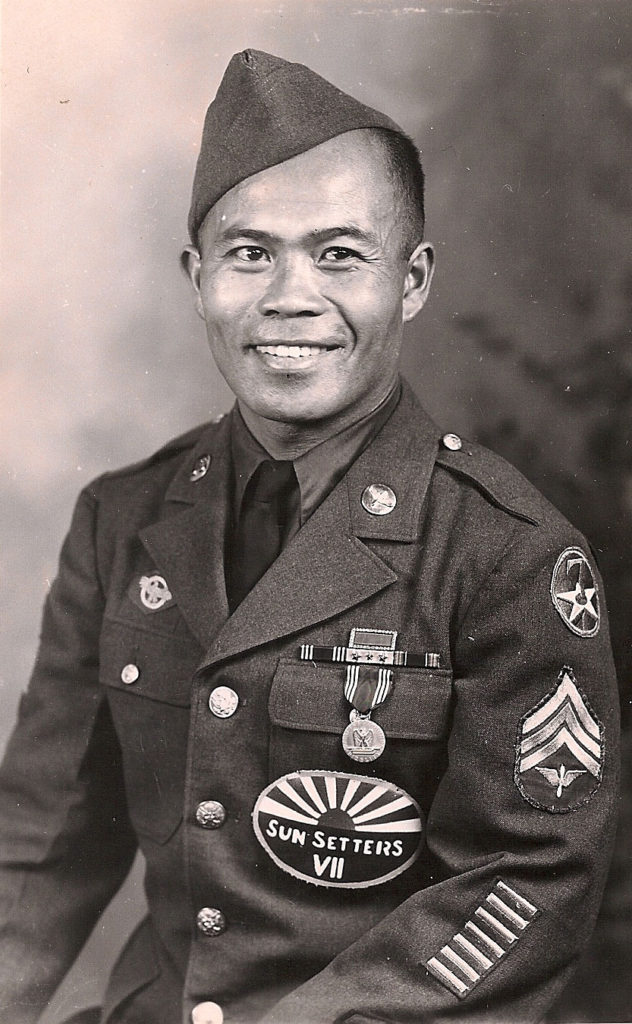
Godofredo ‘Freddy’ Alnas
For nearly 60 years, Godofredo Leonardo “Freddy” Alnas was one of the most popular and beloved manongs on the Central California Coast. His geographical run stretched from San Juan Bautista to the Pajaro Valley and up to the sprout fields north of Santa Cruz. He had many nicknames—on the Santa Cruz Wharf, which he frequented daily in his later years, he was genially known as “Number One”—but mostly he was known as “Freddy” or “Uncle Freddy” wherever he appeared with his big smile and joyful demeanor. He was also known to sing an unforgettable a cappella rendition of “Mexicali Rose.” Born in Banqui, on the northern shores of of the Philippines, in June of 1912, Alnas emigrated to the United States at the age of 18, arriving in the Monterey Bay region in the summer of 1930, just in time for the summer harvest, but more significantly, in the immediate aftermath of the Watsonville Anti-Filipino Riots of January 1930, the largest and most violent of its kind in California. Nonetheless, he quickly found work in the fields and packing sheds of the region. Alnas loved food, especially the maritime cuisine of his native Luzon, and he became well-known as a chef in the Filipino neighborhoods and farm labor camps where he lived. He loved to fish and collect seaweed—from Big Sur to Pescadero—and, on weekends, gamble on the cockfights that were staged on secluded farmlands in the region. At various times, he raised fighting cocks of his own. During World War II, Freddy served as a sergeant in the 46th Fighting Squadron and participated in combat during the legendary Battle of Iwo Jima; his signature appears on the Japanese flag captured by American forces during that battle. In the late 1990s, with his health failing, Alnas returned to his homeland. He died there, at the age of 85, in July of 1997. (Geoffrey Dunn)
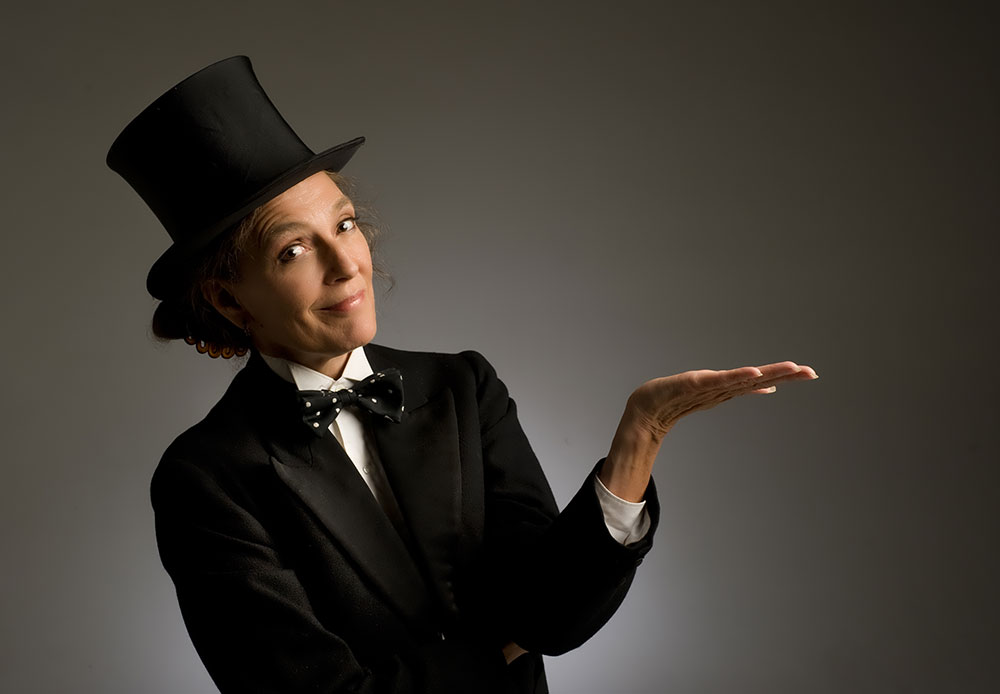
Tandy Beal
A beautiful dreamer armed with ideas of multimedia movement before that was even a thing, Beal arrived in Santa Cruz from the East Coast in 1971. The offspring of professional actors, Beal had studied modern dance with Alwin Nikolais and brought his template of clever costumes and whimsical stage hijinks into her classrooms and onto local stages. Beal and her partner, composer Jon Scoville, collaborated over the years on workshops and conceptual dance works, to the delight of Central California audiences. A typical Tandy Beal experience was the performance in which guest artist Bobby McFerrin began singing and playing, while the dancer watched and listened for a minute or two before improvising her own kinetic response. They continued, call and response, singing and dancing, until they almost levitated with joy at their own performative fun. She made and invited circuses, but she also explored life after death in a darker bit of play called HereAfterHere. With her signature knee-length tresses and impossible grace, Tandy Beal has given Santa Cruz a priceless gift: Her presence. (Christina Waters)
James Beauregard
James Beauregard carved out and won approval for the only American Viticultural Area that Santa Cruz can truly call its own. While the Santa Cruz Mountains AVA, approved two years earlier, prominently brands the region, it’s shared with two other counties. Beauregard, a third-generation winegrower from a local farming family, pushed for Ben Lomond Mountain to be recognized on its own. When the appellation was approved in 1983, it put Santa Cruz’s mountain vineyards on the map and cemented the district’s reputation for independent, terroir-driven wine. His family continues to run the quintessential trend-defying independent grocer Shopper’s Corner, which showcases local vintners and artisanal food producers, and offers Monterey Bay sails on their 70-foot schooner, Chardonnay II. Together the three enterprises capture Santa Cruz’s idiosyncratic ethos, on land and sea. (Dan Pulcrano)

Susie Bright
To know Susie Bright is to love her—her wit, her spontaneity, candor, passion, her incessant lust for life. An author and feminist activist, Bright was a founding contributor to On Our Backs, one of the first lesbian sex-positive publications in the U.S. and in which her path-breaking column “Susie Sexpert” first appeared in 1984. Since then, she has written or edited more than two dozen books on sex and politics and the joys of the body. She also worked behind the counter at Good Vibrations sex shop in San Francisco and, dig this, had a cameo in the neo-noir lesbian crime thriller Bound, starring Gina Gershon and Jennifer Tilly. You guessed it, Bright choreographed the sex scenes between the two stars. Yowsa! In 2017, she was named the recipient of the Humanist Feminist Award. A graduate of UCSC (she studied under Community Studies icons Carter Wilson and Nancy Stoller) who later taught there as well, she has graced the Santa Cruz Westside since 1979, most recently in her colorful Victorian with husband Jon Bailiff and daughter Aretha (with whom she wrote the book Mother/Daughter Sex Advice). In a revelatory recent journal blog she declared simply of Santa Cruz, “I’ll be glad to take my last breath here.” (Geoffrey Dunn)
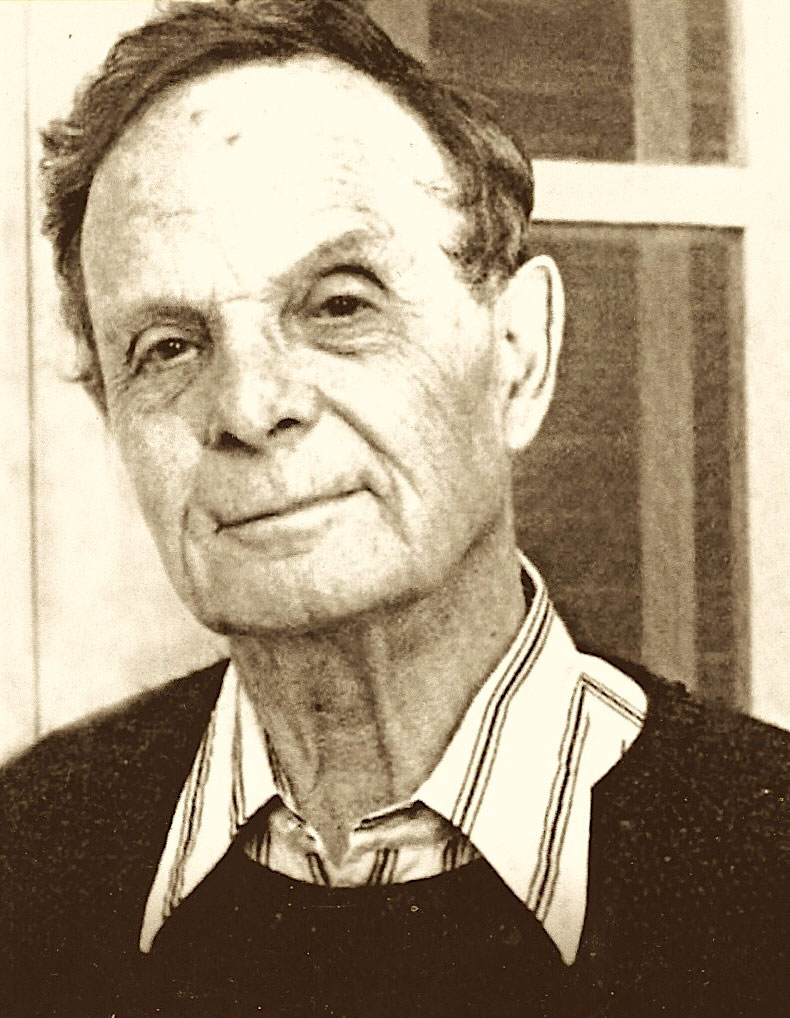
Norman O. Brown
“Nobby,” as his friends and students affectionately called him, was a fixture at UCSC from his arrival in 1968 as a “Professor of Humanities” until his death here at the age of 89 in 2002. His two bombshell books—Life Against Death: The Psychoanalytical Meaning of History (1959) and Love’s Body (1966)—blew the lid off academic discourse in the humanities and social sciences on the eve of the student uprisings of the 1960s. Like his friend, mentor and UC system colleague Herbert Marcuse, whose Eros and Civilization (1955) served as a forerunner to Nobby’s work, Brown served in the Office of Strategic Services (OSS, precursor to the CIA) during World War II. There was a time when there were two types of students at UCSC, those who had taken Nobby’s classes and those who would never consider it. Born in Mexico and the child of a Cuban mother, he liked to stroll around UCSC in his later years looking for students to engage in discourse. “Think more deeply,” he would urge, always sweetly. For all his radical thought, he didn’t like confrontation and disassociated himself from the radical social outbursts of the era his works unleashed. “To be seen,” he wrote in Love’s Body, “is the ambition of ghosts; to be remembered is the ambition of the dead.” (Geoffrey Dunn)
Alan Chadwick
Back in the 1960s, Alan Chadwick quietly sparked a revolution by introducing a radical new approach to farming at UCSC. His biodynamic, hands-in-the-soil methods—teaming with compost, cover crops and careful observation—reshaped how we grow our food. What started as a handful of inspired apprentices transformed into the foundation for sustainable agriculture on the Central Coast. Today, farmers markets overflow with vibrant organic produce, and local growers cite Chadwick as a guiding spirit. His legacy lives on in every lush, chemical-free garden and every mindful bite of seasonal, homegrown goodness. (Elizabeth Borelli)
Philip Collins
At the heart of the only-in-Santa-Cruz music scene is musical maverick Philip Collins, a brilliant artistic director with an uncompromising sense of musical play.
New Music Works was started in 1979 by Tim Bell, Philip Collins, Ron Elfving, Richard Freeman-Toole and Gene Lewis as a way to perform their own new music in public venues. Collins has served as artistic director since 1982. A protégé and student of West Coast musical giant Lou Harrison, Collins studied conducting with Nicole Paiement at UCSC where he took his master’s degree in music.
The ’80s were golden years for Collins and his innovative cohorts hosting an annual summer Avant Garden Party, with catering by Jozseph Schultz, and loaded with performative frolic up at his Westside compound. The tradition—al fresco experimental music, playful ambience, and inventive wine and foods—was yet another showcase for Collins’ unflinching programming and rumpled genius. In 1988 the award-winning maestro and company launched the infamous Night of the Living Composers, originally showcasing Collins’ adventurous soundtrack whilst screening classic horror films. Now armed with its 11-piece New Music Works Ensemble, the adventurous group hosts a concert series that over the years has hosted such guest artists as Terry Riley, Steve Reich, Philip Glass, Jon Scoville, Tandy Beal and countless others. An inventive composer and fearless conductor, Collins invites original works by Bay Area musical stars such as Michael McGushin, Sheila Willey, Sarah Cahill, Steed Cowart, Chris Pratorius, William Winant and Stan Poplin, whose performances invariably surprise and amaze.
Creating ingenious, edgy and oft difficult programs featuring courageous choral ensembles, soloists, and his gifted in-house ensemble to power through musical scores still fresh from the printer, Collins continues to keep time to a different drummer. A gifted and tireless music educator, he has taught at every educational institution in the region. Somehow he’s found time to compose dreamy and intricate music for voice, guitar and orchestra. Santa Cruz’s cultural hearth would be impossible without him. (Christina Waters)
Barney Bricmont
Bernard “Barney” Bricmont played a pivotal role in shaping Santa Cruz as a hub for the organic farming movement. From his home in Santa Cruz, he organized the founding of California Certified Organic Farmers (CCOF) in 1973, serving as its vice president and later president for a decade. He was instrumental in launching the region’s first postwar farmers’ market at Live Oak Elementary School in 1975. Working alongside Assemblymember Sam Farr, Bricmont also contributed to the landmark California Organic Foods Act of 1979, cementing Santa Cruz’s influence on the statewide organic food movement. This pioneering effort laid the groundwork for the vibrant network of farmers’ markets that flourishes today throughout the Central Coast. (Dan Pulcrano)
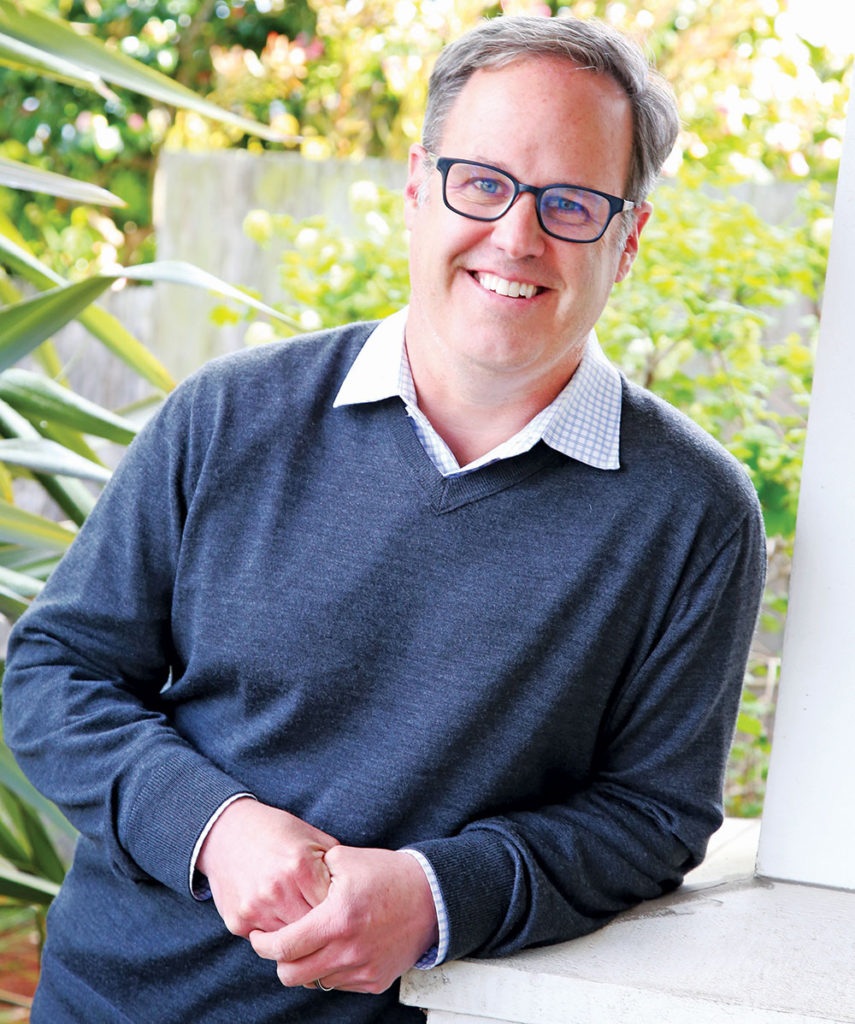
Coonerty Family
Not including Ryan Coonerty on a list of influential Santa Cruzans would be remiss. It would also be an oversight not to pay tribute to his whole family, who have contributed a tireless work ethic and a host of “novel” ideas that have helped shape and grow Santa Cruz as a hub of progressive thought and action. Imagine a much kinder and more progressive Sopranos: the Coonerty family is intergenerationally impressive. Ryan’s parents, Neal and Candy, took on Bookshop Santa Cruz in 1973 and gave the community a place to commune. Sister Casey has carried the torch, running Bookshop Santa Cruz with a keen eye on fostering community. Ryan followed his father into the local political scene, where his ambitions and savvy have seen him helming the mayoral seat twice, in 2008 and 2011, followed by his time on the Santa Cruz County Board of Supervisors, representing Davenport, Bonny Doon and Santa Cruz in the Third District from 2014 to 2022. The author of Etched in Stone: Enduring Words From Our Nation’s Monuments and co-author of The Rise of the Naked Economy—How to Benefit from the Changing Workplace, Ryan put ideas into action and co-founded (with Naked Economy co-author Jeremy Neuner) NextSpace, an affordable downtown office space where a myriad of different hats and dreamers could gather and share ideas. (DNA)
Valerie Corral
Valerie Corral moved to Santa Cruz in 1974 with her partner Mike Corral, who later became her husband. “We built WAMM together,” she said. “It wouldn’t have happened without him.”
She came here after surviving a traumatic brain injury from a car accident on Pyramid Highway. “A plane hit our car,” she said. “I was rolling a joint when it happened.” After the accident, she began using cannabis for healing.
“I wanted to move where there was no electricity, no people, no madness,” she said. “Just no curiosity of the city.” Santa Cruz was her answer.
As co-founders of the Wo/Men’s Alliance for Medical Marijuana, Valerie and Mike helped shape not only Santa Cruz but also the national conversation around cannabis and compassionate care.
When asked who else helped shape Santa Cruz over the past 50 years, she named Mike Rotkin, who passed away recently. “Definitely Mike Rotkin. He was our socialist mayor,” she said. She also mentioned his wife, Madeline. Among others, she listed Gloria Nieto and Jo Kenny, who were partners; Dr. Arnold Leff; and writer Adrienne Rich.
“I remember when Good Times started,” she said. “Santa Cruz was trying to be so permanent, except they ruined the potential for that by making it not beautiful.”
Valerie is still here. Still showing up for patients. Still grounded in compassion. Still a vital part of Santa Cruz.
She became a national figure in the fight for compassionate cannabis access. WAMM was the first medical marijuana collective in the country sanctioned by local and state authorities. Valerie helped write and defend the laws that gave thousands of patients access to care they otherwise would have been denied. (Joshua Logan)
Geoffrey Dunn
As the county’s preeminent cultural historian, Geoffrey Dunn has used nonfiction storytelling to document the people and stories that have become central to the Santa Cruz narrative. Some of his signature work has documented the role of the Italian fishing community in the making of modern Santa Cruz and the Hawaiian royals who brought surfing to the mouth of the San Lorenzo River. Dunn was one of the earliest journalists to document misconduct and cover-ups in the Catholic Church and is the author of a scathing political biography of Sarah Palin. More than just a simple scribe, Dunn has been a documentary filmmaker, immortalizing legends of Caribbean music, a lecturer at UCSC’s Community Studies and Film & Digital Media departments and a hidden power in the development community who has helped bring more housing to Santa Cruz. (Dan Pulcrano)
William Everson
During his glory days as a renegade Dominican monk, Beat poet and seminal figure of the San Francisco Renaissance of the 1950s, William “Bill” Everson was known as the frock-wearing Brother Antoninus, full of sound and fury, signifying everything. He came to UCSC’s Kresge College in 1971 where he taught his quintessential course, Birth of a Poet, while taking up residence on the wild North Coast. With his flowing white hair and beard, he shuffled across the stage as if a shaman emanating from a cloud; he was a Whitman, Blake, Daniel Boone and his literary hero Robinson Jeffers all rolled into one. His lectures weren’t really lectures, but “meditations,” stream-of-consciousness journeys into the subjective regions of the mind. Sort of like Mass on acid. “Vocare, vocare,” he would repeat time and again. “The calling. A call from the deep of the night in the inner soul. The inner being is opening its eye, trying to see. The inner nodes are birthing, flowering. Messages of supreme consequence, implicit urgency. The Threshold.” He published numerous books of poetry and essays over the years—Robinson Jeffers: Fragments of an Older Fury (1968) and Archetype West: The Pacific Coast as a Literary Region (1976) are favorites—all while founding Lime Kiln Press, through which he printed highly sought-after fine-art editions of his own work, Whitman, Jeffers and others. His hand-press students formed a community of printers on the West Coast that spanned generations. (Geoffrey Dunn)
Greg Glassman and Lauren Jenai
In 2000, Greg Glassman and Lauren Jenai planted the seeds of a fitness revolution right here in Santa Cruz with the founding of CrossFit. What started in a small gym on Research Park Drive grew into a global movement, reshaping the way people thought about strength, endurance and community. Santa Cruz was the proving ground—locals were among the first to swap traditional workouts for high-intensity, functional training that felt raw, challenging and empowering. Their vision didn’t just launch a fitness brand; it grew across the nation by creating a culture where grit and camaraderie thrived. (Elizabeth Borelli)
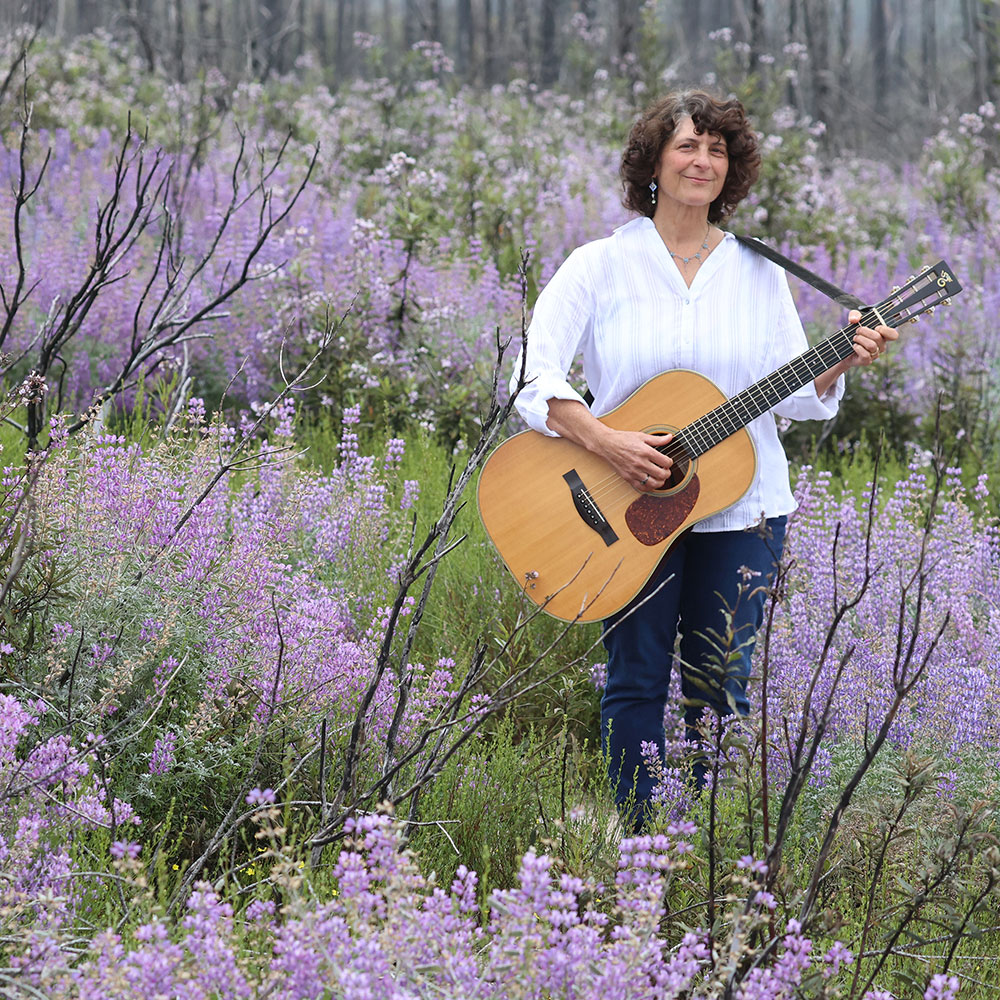
Rachel Anne Goodman
From the ashes of the failed community radio station KUSP, Rachel Anne Goodman created what many consider to be a miracle; she led the formation of a new, all-community radio station, KSQD (The Squid). Goodman is KSQD’s current board chair and host of its flagship program, Talk of the Bay.
While she plays a pivotal role in shaping the voice and values of local media, she laughs it off: “I’m just one of the village.”
Goodman says community radio is our lifeblood, that it reinforces our sense of place. “There’s something magic about it. It’s free. You can just dial it in on this little device in your car. And it feels like these people are your friends, you know, because they care about your local community and they’re making references to it. And we’re not just catering to the local community; we’re exporting Santa Cruz culture to the world.”
Goodman grew up in Berkeley, interned at KPFA, and then went to UC Santa Cruz where she started broadcasting at KZSC. She worked all over the country as a documentary producer (Peabody Award) and was a longtime volunteer at KUSP—Santa Cruz’s late, lamented public radio station, founded by David Freedman and Lorenzo Milam.
She brought her Talk of the Bay show from KUSP to KSQD, applying a storytelling skill that is a touchstone for local journalism. She teaches journalism at Cabrillo College and has taught at UC Santa Cruz, mentoring upcoming writers, broadcasters, and socially conscious media advocates. She is also a singer of her own songs; her latest a satire of consumerism, “When the Going Gets Tough, the Tough Go Shopping.”
Goodman says building KSQD is an act of defiance. “I think we need a common meeting place where we can hear each other think out loud about our conundrum and how we get through it. I think we need a place to celebrate the positive stuff that is happening locally. We have lost so much local media; it’s rapidly capitulating and consolidating to the point where these independent voices are more crucial than ever. It is just talking, but it’s talking to each other.”
Goodman says KSQD went on the air in late 2019, right before the pandemic, the windstorms, the CZU fires and January 6. She points out that with radio, they can report faster than print media, and reporting disasters keeps the community informed. “Look at us now, we’ve reached Monterey, we have programming about Big Sur and things people care about like the Monterey Jazz Festival and local news. We recently purchased an additional frequency located on Fremont Peak; it extends KSQD’s potential from 187,000 to 645,000 listeners.” (Richard Stockton)

Randall Grahm
Randall Grahm has long been called a visionary of California wine. Founder of Bonny Doon Vineyard and now Popelouchum in San Juan Bautista, Grahm has built his reputation on bucking tradition while chasing beauty in the bottle. Asked about his reputation as a “visionary winemaker,” Grahm explains how he came to take such an experimental approach. “To be honest, it started as a survival instinct,” Grahm admits. “I never understood marketing or business, but I always intuited that to succeed, you had to stand apart. If everyone was growing Chardonnay and Cabernet, I felt compelled to head the other way. It’s just my temperament—I move opposite when the world marches in one direction.” Now, at Popelouchum, Grahm is pursuing his boldest project yet: breeding entirely new grape varieties, not to fix problems but to seek beauty. “We’re creating variability, planting diverse biotypes, even mixing red and white Syrah offspring. Maybe the complexity comes not from a single perfect clone, but from many voices together in the chorus.” (Elizabeth Borelli)
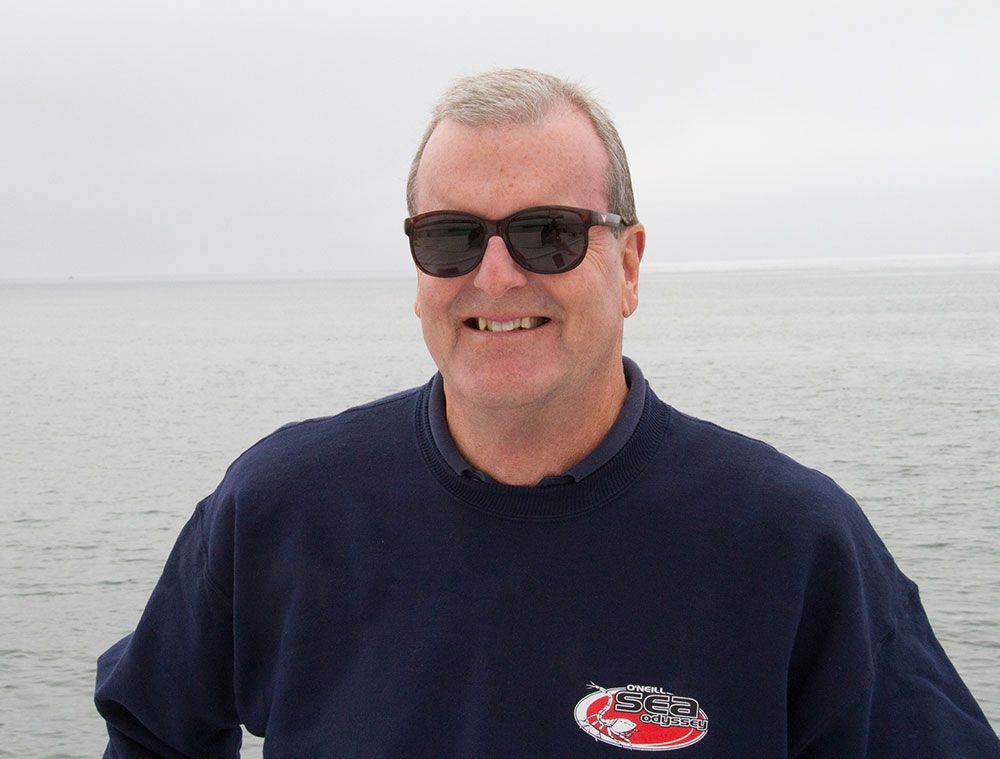
Dan Haifley
Every time you look out at Monterey Bay, you have educator and environmental activist Dan Haifley to thank for the absence of off-shore oil rigs and the creation of the Monterey Bay National Marine Sanctuary. It could look like the California coast from the Santa Barbara Channel all the way to Long Beach. Think about it. Haifley, who was raised in Orange County, said no to that. A steady and energetic presence in Santa Cruz since he first arrived here in 1977 as a student at UCSC (where he majored in economics), Haifley has long been at the center of the community’s political zeitgeist.
He first cut his chops at the activist organization People for a Nuclear Free Future, working with would-be Santa Cruz mayors Jane Weed and the late Scott Kennedy. In 1986, Haifley was hired to run the Oil Information Program of Save Our Shores (SOS), at a time during the Reagan presidency when the entire coast of California appeared to be up for grabs to the highest bidder. Haifley was viewed as the go-to guy on the ground for delivering and stewarding ocean protection legislation in California. In the early 1990s, he used his perch at SOS to work closely with then congressman Leon Panetta and the Center for Marine Conservation (now the Ocean Conservancy) to form an environmental coalition that pushed for the broadest possible boundary for the Monterey Bay Marine Sanctuary—the largest in the nation. Haifley, as Panetta once said to me, was the “field lieutenant” of that effort.
Shortly thereafter, at an SOS event celebrating the Sanctuary, surfing impresario Jack O’Neill (who had become strongly supportive of SOS and environmental protections for the oceans) told Haifley that he was “interested in using his 65-foot sailing catamaran to get students on the water to learn about the ocean.” From that initial discussion, O’Neill Sea Odyssey (OSO) was born. The rest, as they say, is history. OSO offered its first classes in December of 1996; it incorporated as a nonprofit in 1997, and by May of 1999, Haifley had been hired as executive director, where he was at the helm until his retirement in 2019. By the time he bid OSO adieu, more than 100,000 students had participated in the program. The number is now 130,000. (Geoffrey Dunn)
Donna Haraway
As the nation’s first tenured professor of Feminist Studies at our very own University of California Santa Cruz, Donna Haraway has certainly left her mark on Santa Cruz and the world.
Before she settled here, Haraway began her career as a biology professor at the University of Hawaii. She had earned a Ph.D. in the subject from Yale University. She later taught in the History of Science Department at Johns Hopkins University. With others from both Hawaii and Johns Hopkins, she organized the first courses in women’s/feminist studies.
“I was always most interested in the intersections of science, culture and politics,” Haraway said.
At UCSC, Haraway says her tenured position was made possible by the History of Consciousness Program and Helene Moglen, the Humanities dean at the time. She says she was “lucky and honored” to be the first person to be offered the position. In addition to teaching undergraduate Feminist Studies courses, Haraway spent 30 years as the Ph.D. advisor for over 60 graduate students—many of them researching feminist topics—and served on the Ph.D. committees of about 100 more graduate students from other departments. Haraway cited undergraduate student activism as critical in creating a demand for her tenured position.
“I was one of many committed feminist scholars at UCSC, and together, I think we made a real impact in scholarship and in support for feminists who have worked in many areas.”
But who does Haraway consider to have been a positive force of change in Santa Cruz?
According to her, “That’s an easy question.”
“Mike Rotkin,” she said.
Rotkin, the former five-time mayor of Santa Cruz who died last June, was celebrated for his social activism and his role as the city’s socialist-feminist leader and city council member. Santa Cruz has long been regarded as one of the most socially, environmentally, and politically progressive places—conditions that were fostered and honored by local activism legends like Haraway and Rotkin.
During my correspondence with Haraway for this piece, she closed one of her emails with the quote, “When injustice becomes law, resistance becomes duty.” Consider Haraway’s life and the numerous successes she’s brought to the field of feminism. She’s 80 now, and thanks to her and many others, feminism and social activism have come a long way. Yet, those words serve as a firm reminder of just how far we still have to go. (Isabella Blevins)
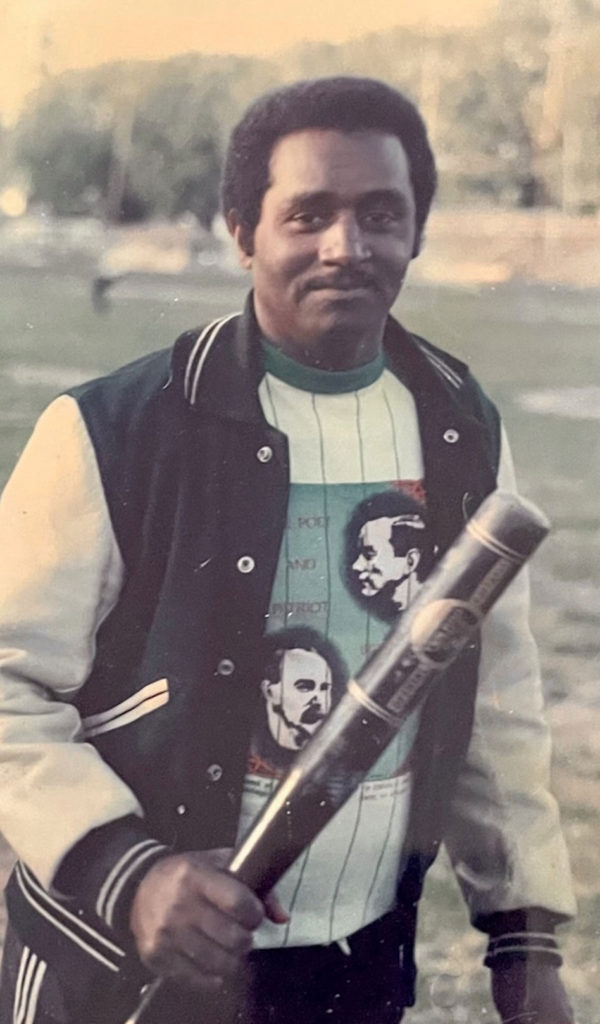
Richard ‘Rip’ Harris
If you’ve ever been anywhere in Santa Cruz with a live band playing outside, you’ve no doubt seen Richard “Rip” Harris, confident and with a big smile on his face, busting a graceful move on the dance floor. Often donning a trademark cowboy hat, the 85-year-old Harris says he “loves the vibe” and “finding the deep rhythm” of whatever type of music is playing, from zydeco to R&B to funk to salsa. A native of the coal and steel region of western Pennsylvania, Harris’s childhood was spent in a hard-scrabble foster-home triangle that included Pittsburgh, New York City and Philadelphia. He managed to earn a degree from SUNY Old Westbury, attended Woodstock, participated in the occupation of Alcatraz (1969-1971) and ultimately found his way to Santa Cruz. “It was tough finding a job here then,” he noted. A mainstay on the legendary Poet & Patriot softball team of the 1980s, he eventually landed a position in Santa Cruz City Schools in 1984, serving as a campus supervisor at Santa Cruz High for 33 years. He became a prominent fixture for generations of local teens finding their way through the morass of the local public school maze. “I couldn’t have been more blessed to have found a place here,” he said. “Truly blessed.” (Geoffrey Dunn)
Lou Harrison
Besides sharing a Pulitzer Prize for his experimental music, composer Lou Harrison made a contribution to Santa Cruz that has lived on long after his 2003 death. In 1963, while teaching at Cabrillo College, he helped found the Cabrillo Festival of New Music, a two-week concert that has brought worldwide attention to the county. Harrison brought in internationally famous composers, including John Cage, Carlos Chávez, John Adams and Aaron Copland, who helped put the festival on the map. It continues to attract music lovers to this day and is sometimes better known around the world than in town. Harrison, who was raised in part in San Francisco, became enthralled with Asian music and brought in Javanese and Balinese elements to his compositions, creating truly world music that is an important part of Santa Cruz culture. He came out as gay at the age of 17 in 1934, a revolutionary tack at the time people were being jailed for their sexual preferences. He was praised by writer and doctor Lawrence Mass for showing that being gay was “something affirmative.” (Brad Kava)

Frosty Hesson
Pleasure Point surfing legend Frosty Hesson caught the biggest wave of his life a little more than a decade ago when the story of his mentoring of local surfing phenom Jay Moriarity was made into a major Hollywood film, Chasing Mavericks, starring the Scottish-born Gerard Butler as Hesson. It’s not every day—or even every decade—that something like that happens to a sun-bleached surfer from Santa Cruz. But Frosty Hesson is not your everyday guy. His moving memoir, Making Mavericks, written with Ian Spiegelman, was published by Zola Press just before the release of the film. It is a poignant tale with a far larger narrative arc than the film, beginning with Hesson’s birth in San Francisco in 1950 and continuing through the death of Moriarity in 2001. His father was an alcoholic, his mother besieged by poor health, and within a six-month period shortly after graduating from high school, his mother, father and grandfather all died, his mother from suicide, his father “from a broken heart.” The book chronicles Hesson’s life’s journey—his competitive swimming and water polo career, broken and tragic relationships, and more death (he fell in love with Robin “Zeuf” Janiszeufski-Hesson, who also died from cancer). Little wonder that he became obsessed with riding the mountainous waves at Mavericks. Early on in his book, Hesson recounts a childhood experience of visiting the famed Sutro Baths in San Francisco. His parents wanted him to stay in the shallow end of the magnificent swimming complex, where it was safe and presented the young Hesson with no challenges. He would have none of it. “There was just something about that deep end,” he writes. “The shallow end was little, for little kids. But the deep end, it was darker, it was bigger—it was there.” (Geoffrey Dunn)
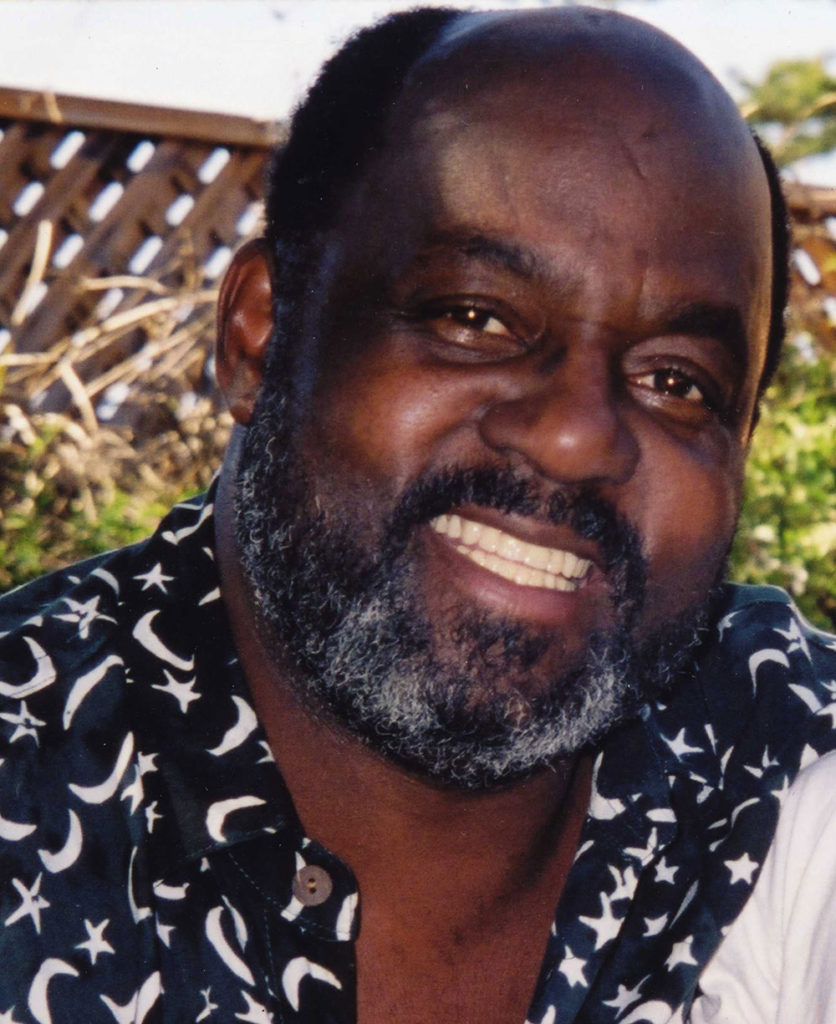
Tony Hill
Tony Hill was the conscience of the greater Santa Cruz community. He grew up on the mean streets of Harlem and—in the aftermath of the landmark 1954 Supreme Court decision, Brown v. Board of Education of Topeka, which ruled that racially segregated schools were inherently unequal—he became one of the first group of African American students bussed into New York City’s white neighborhoods to facilitate racial integration. This experience had a profound and defining influence on the young Hill, and it would shape his social outlook for the remainder of his life. After graduation from George Washington High School in upper Manhattan, Hill attended New York University, majoring in both psychology and business, and then headed west in 1972, first to Los Angeles, where he began working with troubled teens and where he also met his future wife, Melanie Stern. He arrived in Santa Cruz in 1977, once again working with underprivileged youth, and then in 1983 he was named Community Relations Director for Group W, then the county’s cable franchise operator. Almost immediately he established KRUZ-TV and directed the station’s energies toward supporting local high school arts and athletic programs. From that point on, he became a dominant figure—and prominent voice—in the community. For the better part of the past quarter century, Hill dedicated his life to championing the plight of the poor and dispossessed and underprivileged in Santa Cruz County. He was never afraid to chastise the then-dominant political establishment in Santa Cruz County for emphasizing environmental sensibilities over social concerns. He liked to “break paradigms,” find “win-win” solutions, “celebrate diversity” and preferred the concept of a “Declaration of Interdependence” over one of independence. And, of course, everything was done “with esteem.” Hill loved walking along West Cliff Drive. As he gazed out across the waters of Monterey Bay or sat in the backyard of his Westside home, he would often marvel how far he had come from his painful, impoverished childhood in New York City. “I have arrived,” he would announce, his graveled voice bearing the urban landscape of his youth. “And I came a long way to get here.” He died from a heart attack, in 2007, at the age of 62. The City of Santa Cruz named the community room at the Civic Auditorium in his honor. (Geoffrey Dunn)
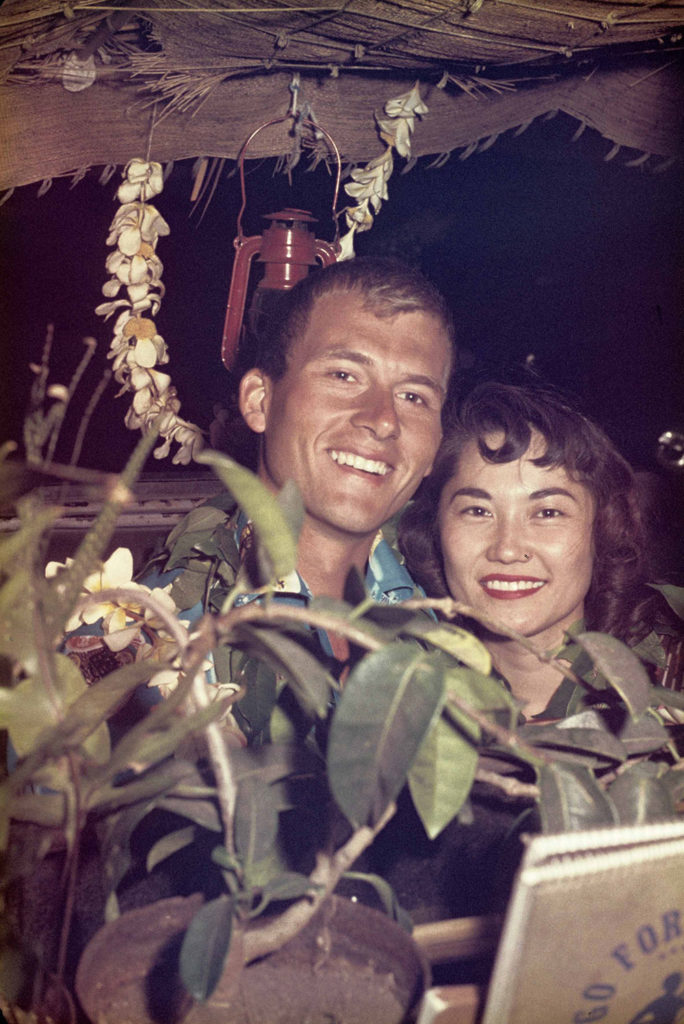
James Houston and Jeanne Wakatsuki Houston
If there were two leading lights at the beginning in the cultural transformation that took place in Santa Cruz County following World War II it was Jim and Jeanne Houston. And they lit up the local literary and cinema scenes for more than a half century. Talk about giants. Both were children of California and the Pacific Rim. Both found their way to San Jose State University where they met, fell in love, and formed a family with three talented children, Cori, Gabby and Josh, and an extended network of friends that included writers, musicians, filmmakers, surfers, actors, directors, producers, painters and healers.
Their landmark home overlooking Schwan Lake and Monterey Bay became the cultural center of the community. In their early years here, Jim was a dedicated writer while Jeanne initially served as a mother and social worker. But it was with their collaboration with Farewell to Manzanar—written in Jeanne’s voice and which chronicled her painful childhood experience as an incarcerated Japanese American during World War II. It was a book that would change forever the American consciousness toward this racist and previously buried piece of the nation’s history. Three years later Manzanar was made into an NBC Movie of the Week, directed by John Korty. The couple had forced a revolutionary reconsideration of American history. More books followed. More films. They also brought the Pacific Rim Film Festival to Santa Cruz and Watsonville, providing cinematic fare (for free) from throughout Asia and the Pacific to local audiences for a quarter-century.
The awards piled up. Jim was awarded an American Book Award in 1999; Jeanne was named Governor Gavin Newsom to the California Hall of Fame in 2019, where she joined the likes of Houston received a crowning recognition when she was named by Governor Gavin Newsom to the California Hall of Fame, joining the celebrated ranks of Caesar Chavez, Alice Walker, Ishi, John Steinbeck, Dolores Huerta, Harvey Milk, and Gary Snyder. Jim passed away in 2009; Jeanne last December. When asked, before her passing, about the relevance of Farewell to Manzanar fifty years after it was first published, she said, “I think it’s still very relevant, especially with all the ignorance there is in Washington. It’s relevant all the time. We always have to be alert to the threats of power and small-mindedness. I wish that we didn’t, but we do. Our schools and the media make us so much more aware than we were when I was growing up, but you have to be on your toes all the time. You can’t let your guard down. Farewell to Manzanar is a reminder.” (Geoffrey Dunn)
Randall Kane
A vocal, rainbow suspender–wearing opponent of the Vietnam War, Randall Kane worked in journalism and served as dean of the San Francisco Art Institute before settling near Corralitos in 1968. The wild-haired Kane bought The Catalyst the following year and oversaw its ascent as a legendary music club for four decades. It moved it to its current location in 1976, and hosted performances by Nirvana, The Specials, Public Enemy, Phish, Tracy Chapman, Etta James, Pearl Jam, Green Day, R.E.M and many others. It’s safe to say that without the Catalyst, Santa Cruz would have had a more impoverished music scene for the past half century. (Dan Pulcrano)
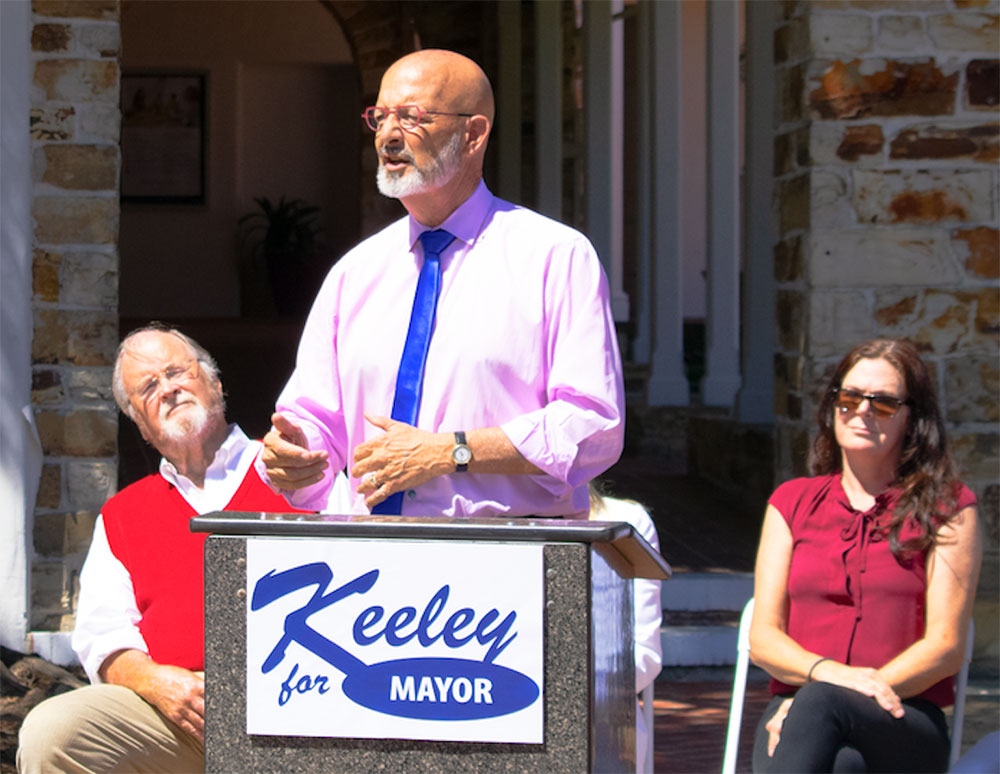
Fred Keeley
Fred Keeley’s tenure as a prominent local political figure stretches back nearly a half-century. In June of 2022 he became Santa Cruz’s first directly elected mayor, when residents overwhelmingly voted to alter the city charter; instead of the City Council choosing a mayor (largely ceremonial), local citizens would elect the mayor by a citywide vote. (Note: Would someone please inform Local Wiki of the change?) As the city’s first mayor of Santa Cruz elected citywide, Keeley won with 70 percent of the vote. No other local politician has Keeley’s extensive political pedigree: he’s served in nearly every elected post with the possible exception of dog catcher. After graduating from San Jose State, in the 1980s Keeley served as policy director for Santa Cruz County Supervisor Joe Cucchaira and then moved on to Sacramento to serve as chief of staff for Assemblymember Sam Farr. Keeley served a pair of terms as supervisor from the County’s Fifth District (San Lorenzo Valley) and went on to the California Assembly, where he served three terms and was named speaker pro tempore a record three times. Eventually he served as Santa Cruz County treasurer before running for mayor. “Santa Cruz is mini-California,” Keeley says. “Ocean, forests, agriculture, higher education, small business, diverse population, way too expensive, clean industry, and a paradise for dreamers and doers. Spending thirty-seven years in four elective offices serving our community has been a lifetime of challenges, successes, and certainly some failures, but, mostly, it has been an honor. At 75 years of age, and about 15 months remaining on my four-year term as mayor, my future goals are to continue to increase housing affordability, reduce homelessness, and protect our coast, ocean and natural environment.” (Geoffrey Dunn)
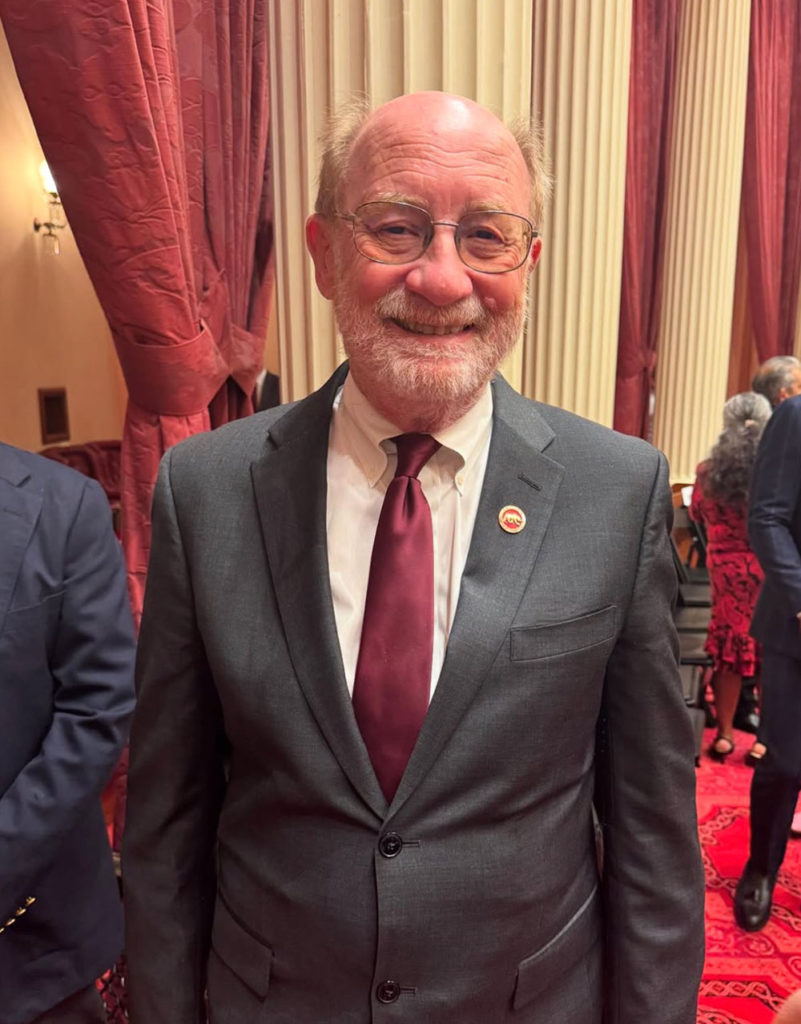
John Laird
John Laird has played a vital role for Santa Cruz for decades, as a community leader, LGBTQ+ trailblazer and fierce environmental advocate, with nearly 40 years in public service, including 23 years as an elected official.
A longtime Santa Cruz resident and UC Santa Cruz graduate, Laird began his public service on the City Council (1981–1990), served two terms as mayor (1983-84 and 1987-88), and became one of the first openly gay mayors in the U.S. During his time on the council, he helped lead local officials in opposing offshore oil drilling and championed the creation of the Monterey Bay National Marine Sanctuary. As founder and executive director of the Santa Cruz AIDS Project in the 1980s to ’90s, he supported people during the worst years of the AIDS epidemic. Since December 2020, he has served as state senator for District 17, which includes all of Santa Cruz County.
Dan Haifley, of Save Our Shores, sees John Laird as a warrior, working tirelessly for the Central Coast. “John is one of the hardest working and most knowledgeable people I know, an amazing conversationalist, he’s like an encyclopedia.”
In 1985 Laird went all in on protecting California shores by blocking the oil companies from offshore drilling with zoning laws. It occurred to him that the one constitutional power granted to cities and counties is zoning, and if you pass a measure that says there can’t be a zoning change in support of offshore drilling without a vote of the people, that would allow the cities and counties along the California coast to shut down the oil companies’ ability to build on-land infrastructure. He also created the policy framework and funding mechanisms for the San Lorenzo Riverwalk
His work with Haifley has protected hundreds of miles of California coast, and John Laird continues to fight for environmental protection, community safety and LGBTQ+ rights to this day. He is a warrior, one of the hardest fighters we have for the values and sensibilities of Santa Cruz. (Richard Stockton)
Cynthia Mathews
If there was one good thing about the 1989 Loma Prieta earthquake, which destroyed much of downtown Santa Cruz, it’s that it launched the political career of Berkeley-born Cynthia Mathews, who served as mayor for four terms, and has been instrumental in big projects, including the Tannery Arts Center, Depot Park, the Monterey Bay Sanctuary and most recently as a booster of the new downtown library. Humbly, Mathews said she didn’t consider herself important, but more of a follower of former Mayor Mike Rotkin, but at 82 years old, she’s still a firebrand, buttonholing locals and inspiring them to help on big projects. The library, which includes affordable housing and a daycare center, was a big battle, although some in the community fought against it claiming the housing wasn’t affordable enough and it was using a parking lot that was the home of the farmers market. She’s used to being at the center of battles and demonstrators protested outside her downtown home. Mathews and her husband Bill moved to Santa Cruz in 1970. She served on the planning commission and after the earthquake she was on a group called Vision Santa Cruz, made up of 36 people charged with growing a downtown where businesses were relegated to giant tents into what we see today.
Her ability to compromise and work with all elements of the community led to her serving six terms on the council starting in 1992, during some of the city’s most turbulent and growth-filled times. When you look at a downtown reborn from devastation, she’s someone to thank. (No relation to Chris Matthews below.) (Brad Kava)
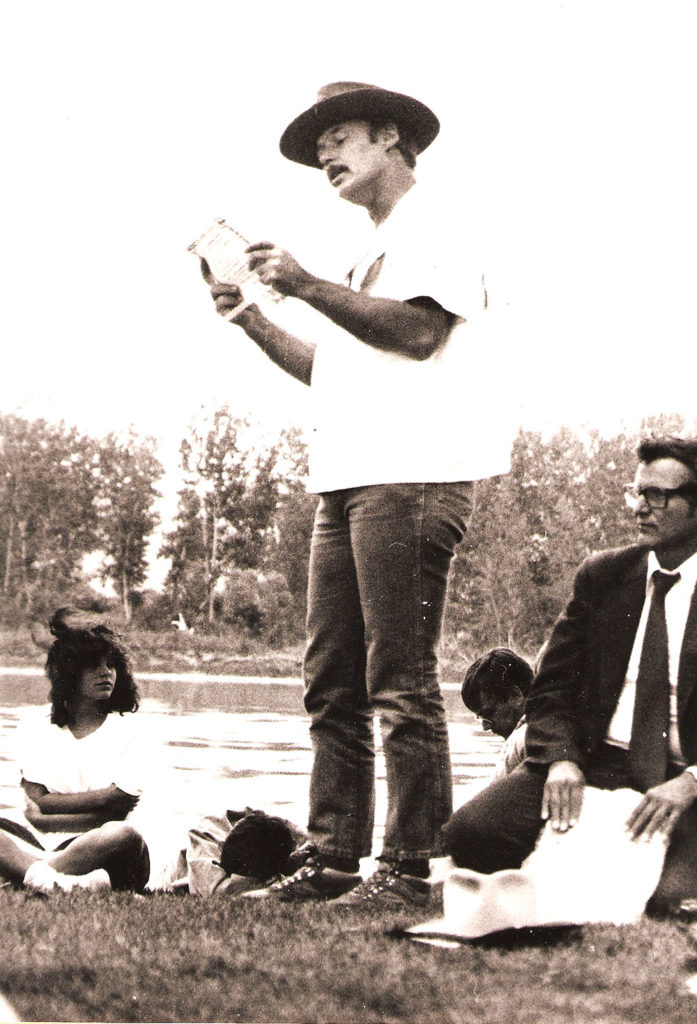
Chris Matthews
If ever there were a larger-than-life figure to walk the streets of Santa Cruz, it was the writer, political activist and publican Chris Matthews, who died, at the all too young age of 61, from a prolonged battle with cancer in 2008. Born and raised in working-class New Jersey, Matthews earned his paratrooper’s wings during the Vietnam War era in the U.S. Army’s 508th Airborne Division and then made his way to Santa Cruz County, where he quickly immersed himself in the unique political and cultural milieu of the times. In 1974 he participated in the radical (and armed) takeover of Ohlone burial grounds and Lee Road near Watsonville, preventing their desecration until a settlement was reached in the spring of 1975. Four years later, Matthews was appointed county supervisor by then-Gov. Jerry Brown for the Pajaro District, following the death of conservative board member Cecil Smith. It was a slap in the face to the white, often racist power brokers in South County. They were outraged. A year earlier, there had been a political coup d’état in Santa Cruz County, when conservatives successfully recalled a pair of progressives on the county Board of Supervisors, Phil Baldwin and Ed Borovatz. As a result, Matthews found himself in the minority on the board, with Santa Cruz progressive Gary Patton. Intensely competitive, Matthews engaged in a steady bout of political drama, most notably with Aptos Supervisor Marilyn Liddicoat, who was straight out of central casting as an Eisenhower-era conservative. The tumult weighed on him and he was busted for a highly publicized DUI. When Matthews ran for election, he finished a distant third. In the early 1980s, Matthews picked up the pieces of his life. He met his future wife, Sue Heinz, with whom he pursued his dream of opening an Irish pub, along with his brother and his longtime pals Ed Alheit and Tim McCormick. Named in honor of Irish poet Padraig Pierce and patriot James Connolly, the Poet and Patriot became a second home for an entire generation of Santa Cruz writers and political activists, Vietnam vets, Irish partisans and more than a few ne’er-do-wells. The boisterous Matthews was always center stage. (Geoffrey Dunn)
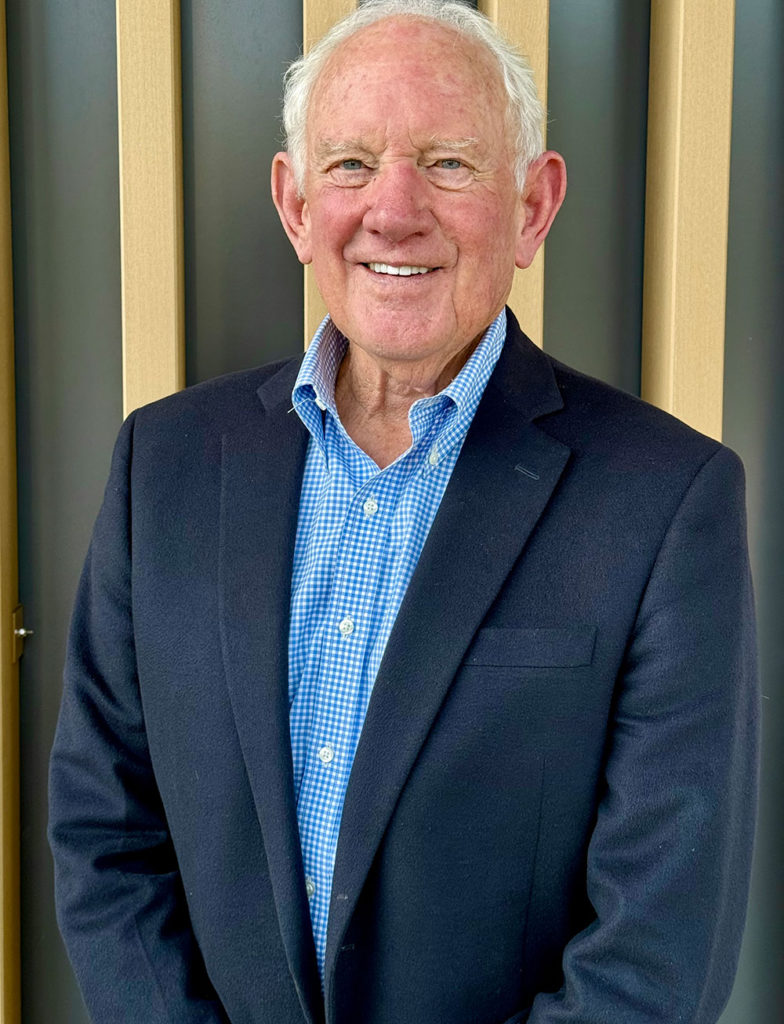
Bruce McPherson
Now in his eighth decade and the fourth generation in the local McPherson family, Bruce McPherson is deeply rooted in Santa Cruz. He spent almost 10 years of that time as a journalist, working for the Santa Cruz Sentinel, which was then owned by the McPhersons. Politics was another logical career; McPherson’s father mounted an unsuccessful bid for a California Assembly seat. McPherson did far better, winning an Assembly seat in 1993 and a California Senate seat in 1996. In 2005 he was nominated by Arnold Schwarzenegger to serve as Secretary of State after Kevin Shelley resigned, and he was unanimously confirmed by the Democratic legislature—the most recent Republican to hold that statewide office. In 2013 he won the District 5 seat on the Santa Cruz County Board of Supervisors; in 2023 he announced that he would not seek reelection. “It’s been a great run,” he said. “I just love this place.” (Sharan Street)
Henry Mello
Watsonville frozen food businessman Henry Mello spent eight years as a county supervisor, then served in California’s legislature for 20 years, from 1976 to 1996. The Mello-Roos Act that bears his name enabled Santa Cruz County school districts to create special funding districts that supported new school construction and improvements after Proposition 13 restricted property tax revenue. Local schools, particularly in South County, benefited directly, ensuring Watsonville and Santa Cruz students had modern facilities. He also played a role in keeping agriculture central to Watsonville’s identity in the face of suburban expansion. The Henry J. Mello Center for the Performing Arts is appropriately named in his honor. (Dan Pulcrano)

Tom Noddy
An artist, a scientist, a comedian, an organizer of street performers and a world-renowned bubble master, Tom Noddy came to Santa Cruz in 1977 when his van overheated and broke down. He saw graffiti on a wall, “Reject authority.” He thought that sounded pretty good. Then he noticed someone had written below it, “Don’t tell me what to do.” Tom decided he’d found his town and has lived here ever since.
Tom Noddy’s importance to Santa Cruz rests on his theatrical artistry, his recurring local performances, and the magic he creates in blending art and science and community by blowing bubbles that are both playful and mind opening. These are intricate bubble sculptures like bubbles within bubbles, caterpillars of smoke, yinyang forms, and dodecahedral bubbles. His innovations turn ephemeral soap spheres into delicate works of living art. Noddy says, “They are psychedelic, gorgeous.”
His national television breakthrough in the early 1980s—including multiple appearances on Johnny Carson’s Tonight Show and That’s Incredible!—gave Santa Cruz a rising star in performance art. These appearances not only expanded Noddy’s audience worldwide but brought recognition to his hometown as a place where imagination thrives.
He organized Santa Cruz street performers, and some of the downtown merchants were good with the idea of having free entertainment that would attract people from the boardwalk down to Pacific Avenue. But then they wanted to audition the performers, and to Noddy, that’s the whole thing about street performing: Nobody auditions. “You gotta have a place to be bad. That’s where good acts come from; they come from bad acts.”
At its heart, his influence is both literal and metaphorical: each bubble is fragile yet mesmerizing, fleeting yet transformative. As they float skyward, they invite us to stop, watch, and rediscover wonder. The invitation to see beauty, to feel joy in effortless play, to connect across generations, that is Noddy’s gift to Santa Cruz. (Richard Stockton)
Jack O’Neill
Jack O’Neill was a surfing innovator and businessman who devoted his life to the ocean. A fanatic sailor and hot air balloon pilot, O’Neill was best known as the founder of the original O’Neill surf brand, and launched the creation of the surf industry as we know it today. His passion for the ocean led him to experiment with designing some of the first pieces of insulated surf wear to allow for longer surf sessions in cold waters. After successful experiments with neoprene by Berkeley physicist Hugh Bradner in the early 1950s, O’Neill adopted the material and famously commercialized the first ever full-sized neoprene wetsuit worldwide as well as introducing a nylon jersey lining—the first of its kind—making the material wearable on bare skin. Moving to Santa Cruz in 1959, Jack O’Neill lived near the ocean in Pleasure Point until he passed away from natural causes at the age of 94 in 2017. He was especially proud of the development of the educational program—Sea Odyssey—teaching children about the ocean to encourage its protection and preservation. (Lucille Tepperman)
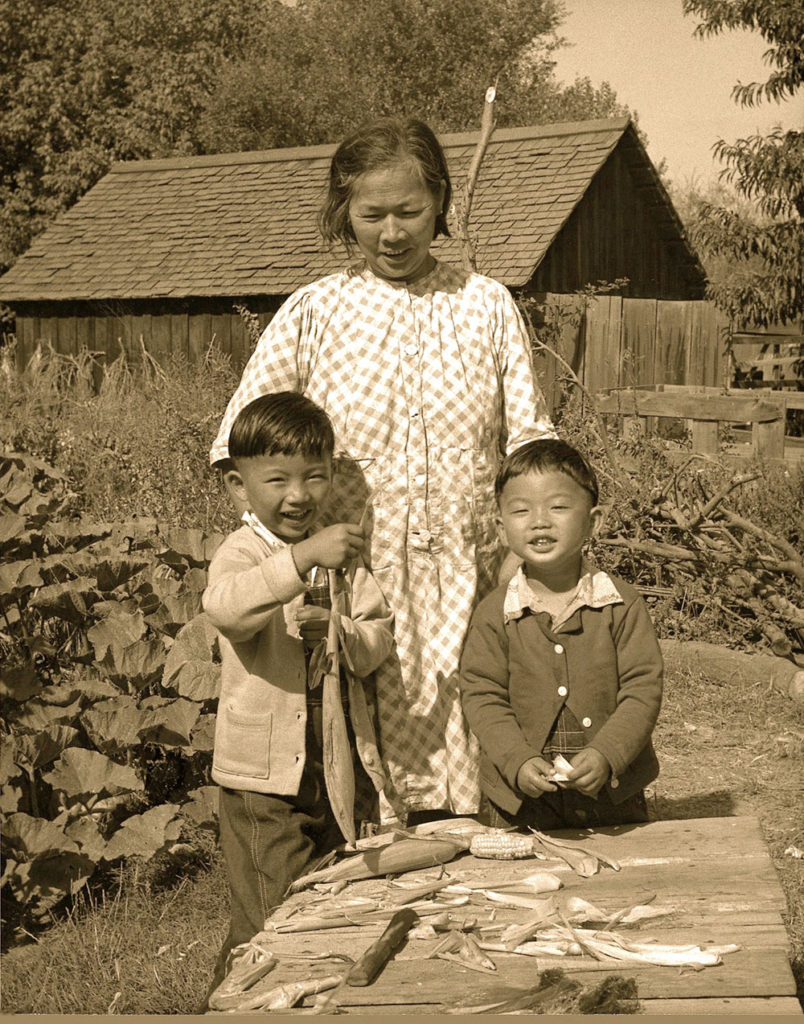
George Ow Jr.
Few people in Santa Cruz have deeper local roots than George Ow Jr. A third-generation Santa Cruzan on both sides of his family tree, Ow was born in the last of the Santa Cruz Chinatowns (near where the Galleria Building is located today) and raised by a family assemblage that included his parents, grandmother and a host of elderly Chinese men in the bachelor society that composed Chinatown. When once asked how he wanted to be identified in a regional magazine article, he said as a commercial real estate proprietor and boogie boarder. He used to spend 300 days a year in the water. Most recently he has spearheaded the design and construction of colorful Chinese-styled arches at the old Chinese burial grounds in Evergreen Cemetery and overlooking his beloved San Lorenzo River. He says he wanted to feed the “hungry ghosts of his ancestors” and make sure they were honored by history. (For more of the background scoop, read Sandy Lydon’s monumental regional history, Chinese Gold: The Chinese of the Monterey Bay Region.) Married to Gail Michaelis Ow, a longtime nurse practitioner at Planned Parenthood, Ow is also a beloved father of three sons and a grandfather to five. “I’m optimistic about the future of Santa Cruz,” he says. “Change is a constant and we have to look for opportunities in that change. But we also have many great challenges. We’ll have to slog through it. This is a very challenging time.” (Geoffrey Dunn)
Gary Patton
Attorney and former Santa Cruz County supervisor Gary Patton led efforts to preserve Santa Cruz County’s environmental character in the face of the development phalanx In the 1970s. He rose to prominence as a leader in the local environmental movement by leading the Save Lighthouse Point Association charge to defeat a high-rise hotel, convention center, shopping mall and condo plan for Lighthouse Field. Then, as a county supervisor, he authored and championed passage of Measure J, a landmark growth-management ordinance that became a template for local preservation efforts around the state. He was instrumental in implementing the California Coastal Act of 1976 at the county level, which gave local communities more power over development along the California coastline. (Dan Pulcrano)
Jim Phillips
The role of iconic visual art in branding a place and mindset can’t be understated. And surf artist Jim Phillips’ created the images associated internationally with Santa Cruz. His screaming hand captured the ethos of the skateboarding movement in a quirky, original and viral way. A hard working graphic artist and illustrator with roots in the 1960s, his early work appeared on surfboards, concert posters and the covers of local publications. After he was hired to draw for the skateboard distribution company NHS Inc., he developed the Santa Cruz Dot logo for Santa Cruz Skateboards as well as the Independent Truck Maltese Cross. The images defined a breakaway lifestyle and subculture that helped represent California to the world. The images are widely present in the casual wear collections in Europe’s global fashion capitals, contributing to the rise of t-shirts as a fashion staple. Some of his most important work, however, has been community based, championing local causes like “”Pack Your Trash” and the Pleasure Point Night Fighters with popular stickers. (Dan Pulcrano)
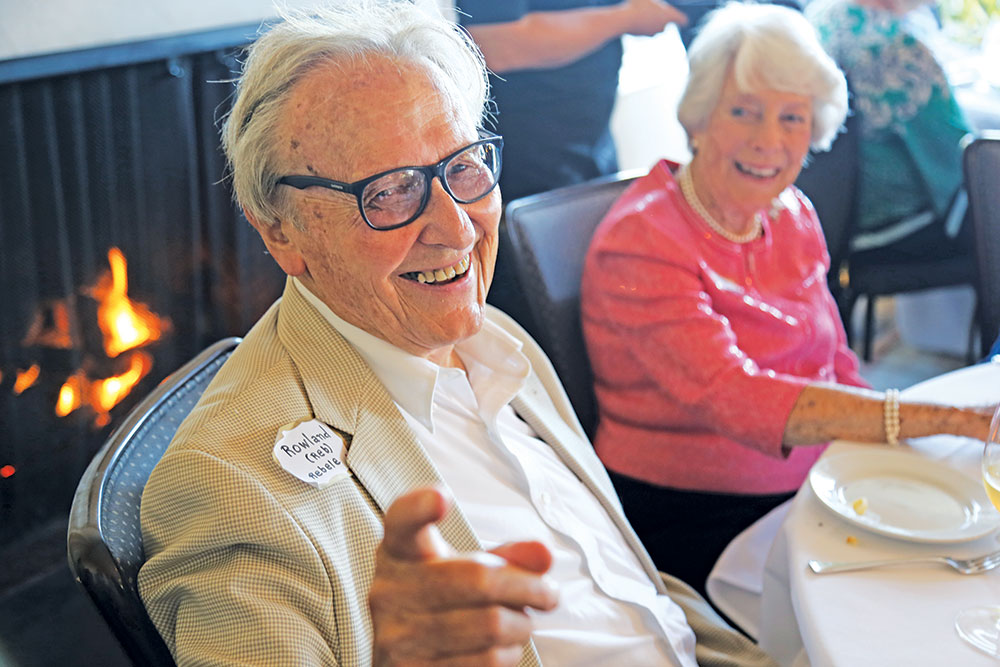
Rowland Rebele
Rowland “Reb” Rebele may have been one of the most generous men in the history of Santa Cruz County. Along with his wife of nearly 70 years, Pat, the Rebeles covered the vast reaches of Santa Cruz County and beyond with their beneficence and largesse. Philanthropy became their way of life. It’s been well documented that during their time in Santa Cruz County, the Rebeles have contributed millions of dollars to more than 100 charitable enterprises in the region, ranging from social services to the arts to journalistic programs to museums to food programs and scholarships and First Amendment protection campaigns—most prominently to Homeless Services, of course, but also to the Community Foundation, the Santa Cruz County Symphony, Good Times’ Santa Cruz Gives, Spectra Plus, Cabrillo College, New Music Works, the Cabrillo Music Festival and the UCSC Foundation. They’ve even established academic chairs at both Stanford and UCSC (the latter reflecting Pat’s love of the visual arts).
Thousands of county residents pass by their names daily, at the intersection of Highway 1 and River Street, atop the Rebele Family Shelter on the Housing Matters campus, to which they contributed a half-million dollars in 2003. When Federal funds were pulled at the last minute from the center’s Interfaith Satellite Shelter program, Rebele, an active member of the center’s board of directors, immediately plopped down another $62,500 to salvage the critical program. “It was the right thing to do,” he recollected only a few weeks ago. “The only thing.”
A product of St. Ignatius Prep in San Francisco, followed by Stanford, Harvard Business School and the U.S. Navy, Rebele made his fortune in publishing community newspapers throughout the west. Shortly before he passed away in the fall of 2023, Rebele stated that he wanted to give all of his money away before he died. Susan True, CEO of the Community Foundation Santa Cruz County, described Reb as “as fierce an advocate as he is a loving friend. He has nurtured relationships over decades and he has brought together his circle of fans and friends as a force for good.”
A huge force. When asked shortly before he died what motivated his philanthropic impulses, he responded: “I guess you could say I got to the point where I wanted to do Christ’s work in the world. The Jesuits [at St. Ignatius] influenced me a lot and were very passionate—they cared about others, they worried about the poor, and they influenced me greatly. They were very meaty on that score. I suppose I took it all in and believed a lot of it. Now I believe in some of it, I just don’t believe in the trappings, I guess is the term. I believe in the meat. The rest is bullshit.” (Geoffrey Dunn)
Adrienne Rich
During a career that spanned seven decades, Adrienne Rich was renowned for her work as a poet and essayist who profoundly and unflinchingly tackled themes of sexuality, identity and politics. Rich was the recipient of numerous literary awards, including (but certainly not limited to) the National Book Award for Poetry, the Ruth Lilly Poetry Prize, the Robert Frost Medal, and the MacArthur Fellowship. Already a successful writer, Rich moved to Santa Cruz in the early 1980s with her partner, Michelle Cliff. She taught as an English professor at UCSC and continued her work as an essayist, lecturer, and poet. She also lectured at Stanford University, San Jose State University, and Scripps College. Her son, Pablo Conrad, said that Rich’s new home in Santa Cruz became an inspiration to her writing—the influence is discernible in her descriptions of the geography and climate. She appreciated the diverse views and lifestyles that Santa Cruz celebrates, which made the town a warm and comforting place to her. When she died in 2012, a Bookshop Santa Cruz–sponsored poetry reading was held at Santa Cruz High School to commemorate her life and work. Accomplished poets, including Robert Hass and Brenda Hillman, gathered to read Rich’s works—the very literature in which she is immortalized. (Isabella Blevins)
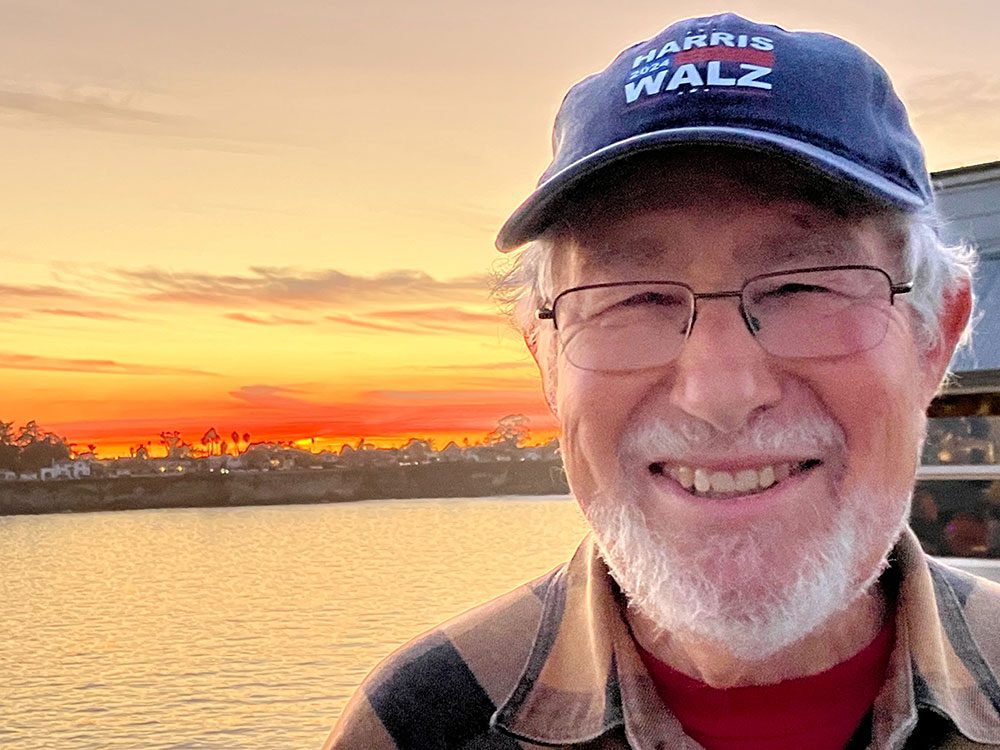
Mike Rotkin
There may not be a single figure more prominently active and participatory in so many aspects of Santa Cruz life for so long as Mike Rotkin. The guy was everywhere for the last half-century and more. Try this out: five-time mayor of Santa Cruz, teacher and field studies coordinator in Community Studies program at UCSC (not to mention labor rep for lecturers), a civil rights advocate and practitioner of civil disobedience, husband, father, friend, mentor, Marxist, humanist, feminist, musician, outdoorsman, environmentalist, transportation guru, basketball and softball player, general bon vivant, shape-shifter, ad infinitum. Ubiquity was his middle name. Surprisingly, his was an American Graffiti childhood (he graduated high school in 1963), in which he was in the marching band (he played a variety of instruments) and was a rather mediocre and uninspired student. It wasn’t until he served as a social worker and community activist in the rural south that he found his political passion and direction. After a stint at Cornell (where his studies focused on literature), he followed his mentor Bill Friedland to UCSC and the rest, as they say, is history. “I’m a very fortunate person,” Rotkin declared to Sarah Rabkin in a fascinating 450-page oral history (available online), “in that I did what I love doing, I got paid well for it, more than comfortably for it, and was able to integrate the different things that I did…So I [found] it challenging, and exciting, and fun work. I’ve never been bored, since I moved to Santa Cruz in 1969, for five minutes in my entire life, I have to say. So—it’s worked out well for me.” Rotkin died last month after a prolonged battle with leukemia. A celebration of his life will be held on what would have been his 80th birthday, Sept. 17. (Geoffrey Dunn)
René Schlaepfer
Anyone who has been to Twin Lakes Church over the last 30 years has seen senior pastor René Schlaepfer. Every Sunday morning, Pastor René gives a sermon that is a perfect blend of pulpit preaching combined with the humor of a late-night talk show host. It’s not an act. People experience Pastor René as a charismatic and kind man whose message is about grace, love and service—and an author of ten books, with titles like Flawed Follower: Travels with Simon Peter. Twin Lakes Church has raised millions of pounds of food to feed the hungry. Creating good-natured competition with Second Harvest Food Bank, Pastor René walks the walk, living as an example of faith into action—as when he performed a moving memorial service for the two police officers who were killed in 2013. While committing himself to the needs of our unhoused, single mothers and seniors who need help, Pastor René also tours the world, spreading his message and lending a hand where needed. And unlike most who get their time in the spotlight, Pastor René is always quick to point out that it is definitely not just about him—he considers all staff and congregation equals in doing the work, and spreading the word. (DNA)
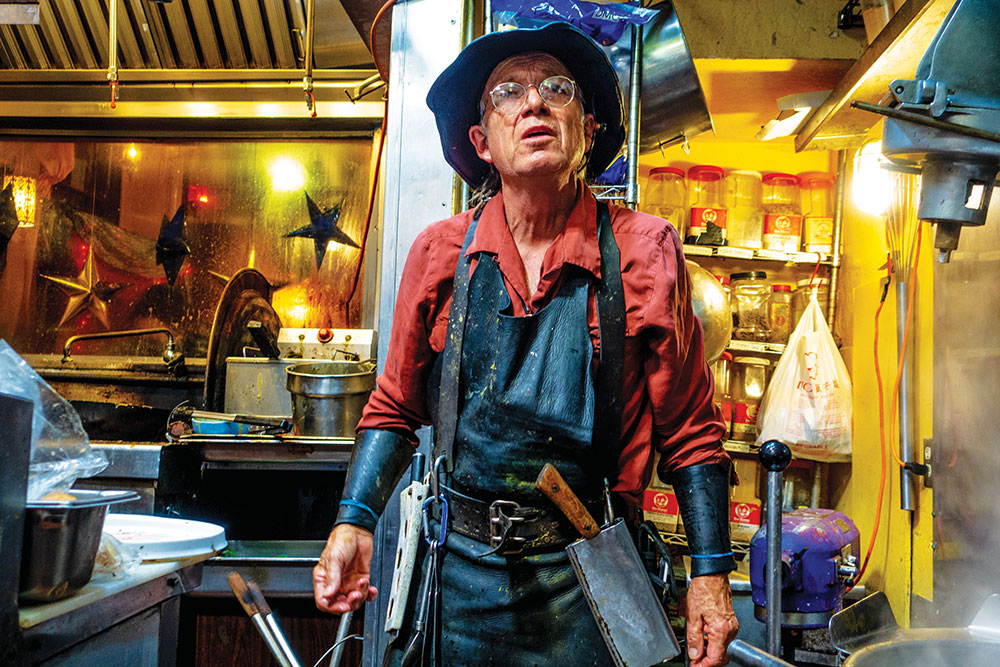
Jozseph Schultz
In the beginning it was just this conceptual food genius, Jozseph Schultz, with his number-one girl fan Beth Regardz making alternative food a cult in the Seabright neighborhood. Then, armed with partners—Regardz, Ann Wasserman, Tom Brezsny and Tom Ellison—Schultz opened the highly spiced kitchen of what would become the epicenter of social life and culinary amazement in downtown Santa Cruz—India Joze Restaurant. From the 1970s up until roughly 2000, Schultz and his intense ways with wok and the various knives fitted into his signature leather apron blew our minds. Putting itself on the national culinary landscape with the invention of the Calamari Festival, for 17 years the restaurant dazzled locals and visitors alike with an array of international cooking styles all centered around the local harvest of wild calamari. You couldn’t not show up daily to taste the latest magic that came from Joze’s kitchen. Ketchup, salsa, chutneys, curries, pastas, stir-fries, and of course anything that could be finessed in a wok, Schultz and company simply seduced and dazzled every single patron. Moving his act into the former 418 Project space on Front St., the seasoning sorcerer kept whipping up intensely orchestrated dishes from a minuscule kitchen, offering gastronomic epiphanies to go during the early days of Covid. While the restaurant bearing his name closed two years ago, the master chef is still in the game as a caterer for private events. Chances are if you attend a New Music Works concert or Avant Garden Party, you’ll still be able to feast on Joze’s glorious hummus, Persian chicken, and addictive hibiscus cooler. Food as an art form was and still is perfected by this local treasure. (Christina Waters)
Barry Swenson
The quirky builder and onetime outlier of a prominent development family, the late Barry Swenson had a knack for buying up properties in the downtowns of Central California communities. Though never really considered a Santa Cruz insider because of his valley roots, the Santa Cruz Mountains resident’s outsized influence proved timely following the 1989 Loma Prieta Earthquake, and his renovations of the Santa Cruz County National Bank building, the Del Mar Theatre, the St. George Hotel, the Bank of America building that became, until recently, downtown’s New Leaf Market and the Dream Inn preserved some key pieces of Santa Cruz’s architectural legacy. One signature project, Aptos Village, revitalized a much needed community center in the form of a contemporary mixed use development. His firm, now known simply as Swenson, is today headed by Swenson’s son, Case. (Dan Pulcrano)
Nikki Silva and Charles Prentiss
It’s hard to think of a Santa Cruz couple more enmeshed with the local cultural scene than Nikki Silva and Charles Prentiss. Silva—along with her longtime collaborator Davia Nelson—formed the Kitchen Sisters back in the late 1970s and the two of them have been a major force on national public radio for nearly a half century (yikes!), winner of two Peabody Awards for the breadth and brilliance of their work. “Tennessee Williams: The Lost Pennyland Recordings” and “waiting for Joe Dimaggio” are two personal favorites. Prentiss who served as the curator and director of the City of Santa Cruz Museum of Natural History (aka the Whale Museum) for just shy of three decades has emerged as one of the most significant painters and printmakers currently working in Santa Cruz County. Together they have designed and curated a host of exhibitions throughout the U.S. They’ve also created a living venue in the wilds of South County that includes a remarkable and talented ensemble of family and friends that deserves to be honored in its own right. Just remember this: “La selva” in Spanish translates into “the jungle.” Wild it is. (Geoffrey Dunn)
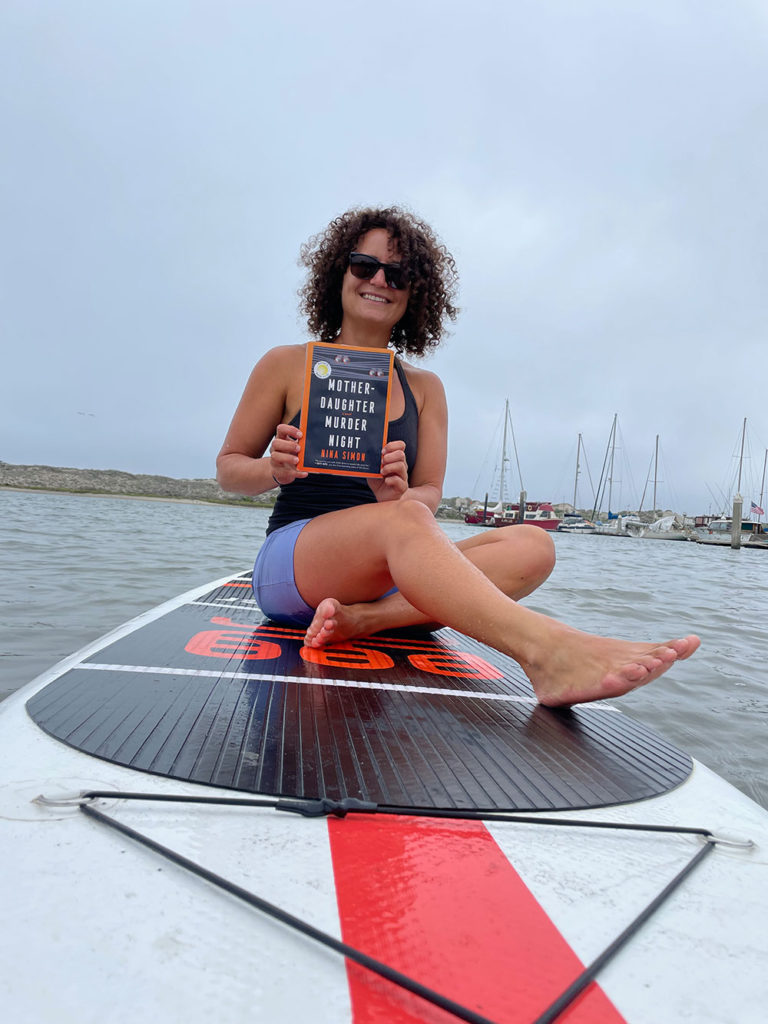
Nina Simon
When Nina Simon took the helm as executive director of the Santa Cruz Museum of Art & History (MAH) in 2012, the institution was struggling. Expenses outstripped revenue, attendance was low. Simon transformed the MAH, and by 2019 its budget had grown to nearly $2.5 million, and attendance boomed to 148,000 annually.
Simon’s approach was revolutionary for Santa Cruz. She says, “I saw museums as participatory, I wanted it to be community-driven. That’s why I wrote The Participatory Museum and The Art of Relevance.” She turned the MAH into a true civic gathering place. She led the design and opened Abbott Square into a vibrant plaza with free markets, live music and public programming. Abbott Square has become a downtown hub for Santa Cruzans of all ages.
And she’s also delighted readers with her best-selling Mother-Daughter Murder Night. As she said at a Santa Cruz Public Library book event, “Like I told my mom, ‘I want to write a story where women are all the good guys and men are all the bad guys and dead people.’”
I ask Nina, “Where does the juice come from for your work in museums?”
She tells me that museums are places for free-choice learning. She says that she has always loved learning but resisted the gold stars and metrics that exist in schools to celebrate achievement, because they also control what the learning path looks like.
“You go to a museum because you’re curious, not to check off what’s on the test or to appease someone else. I see museums and libraries as places that celebrate learning for joy, learning for pleasure, learning for exploration, and that is what drives me to them.”
Simon’s impact extends beyond the MAH. She spawned a global movement through her writing, speaking and founding the nonprofit organization OF/BY/FORALL. These ideas gained credibility through her transformation of the MAH.
In Santa Cruz, Simon did more than save a museum; she redefined what a public cultural institution could be. Her juggernaut energy turned the Museum of Art and History into a thriving, inclusive civic space. Her legacy remains a beacon for how the arts can democratically engage and energize a local community. She is a powerfully influential architect of cultural change for Santa Cruz. (Richard Stockton)
Ann Simonton
“What’s new under the sun?” read the cover of the Sports Illustrated issue that featured a bikini-sporting Ann Simonton in 1974. That image is a far cry from the feminist activist that Simonton would later become. Right out of high school, she started modeling, until she began to notice the eating disorders many models developed and the oversexualization of women in the media. She and feminist activist Nikki Craft launched the Myth California protests against Santa Cruz’s Miss California beauty pageant, which was held downtown in the Civic Auditorium. Simonton infamously appeared in a series of meat outfits throughout the 1980s: a baloney outfit in 1982, a beef swimsuit in 1985 (for which she was arrested), and an outfit made from turkey slices in 1987 that was complete with a chicken drumstick necklace. Defending her methods, Simonton told the Chicago Tribune that pageants “treat people like meat.” Her activism helped run the Miss California pageant—which had been a longstanding tradition since 1924—out of Santa Cruz for good. Over the years, Simonton was arrested numerous times for civil disobedience. She’s since continued her activism in Santa Cruz and served on the Commission for the Prevention of Violence Against Women in the City Manager’s Office from 2018 to 2024. (Isabella Blevins)
Robert Sinsheimer
A controversial chancellor when he arrived, Robert Sinsheimer introduced science, grades, competitive sports and a failed effort to override a student ballot to make the “Santa Cruz Sea Lions” the school’s mascot. The snarky backlash to the latter brought Santa Cruz fame as the Slugs, a prank that succeeded well beyond any RFer’s dreams, demonstrating the nexus between anarchism and modern marketing and subsequently establishing cultural immortality in Quentin Tarantino’s 1994 hit movie Pulp Fiction.
Had that been Sinsheimer’s only accomplishment, the reserved scientist would deserve a spot on this list. However, in May 1985, he conducted a workshop on the feasibility of sequencing the human genome. That led to the Human Genome Project, officially launched in 1990. In May of 2000, UCSC biology grad student Jim Kent hacked an assembly program and cobbled together 100 Dell Pentium workstations to sequence the first human genome on June 22, 2000, outpacing Celera Corp’s supercomputer-powered gene map initiative. (Dan Pulcrano)
Al Smith
Al Smith was a transformative figure in Santa Cruz County’s agricultural and community life, who amassed wealth expanding Orchard Supply Hardware (OSH) into a major chain and then immersed himself in North Coast and Pajaro Valley agriculture and philanthropy. Smith was a major benefactor of Cabrillo College and local schools, supporting scholarships and agricultural training programs.
In 1987, Swanton Berry Farm became the first certified organic strawberry farm in California. And in 2002, it received the Environmental Protection Agency’s Stratospheric Ozone Protection recognition for developing methods of growing strawberries without the use of ozone-depleting methyl bromide.
In 1993, Al Smith donated the 3,200-acre Swanton Pacific Ranch to Cal Poly’s College of Agriculture, Food & Environmental Sciences. Smith’s donation anchored his legacy as both a steward of Santa Cruz County’s natural heritage and a pioneer of experiential education. By gifting the landscape of forest, rangeland and creek systems to Cal Poly as a “living laboratory,” he enabled generations of students to experience applied learning and sustainable land management. (Dan Pulcrano)
Audrey Stanley
The diminutive dramatist with the impish smile, Audrey Stanley exerted both influence and power. In a lifetime of “firsts,” Stanley came to the USA from her native England determined to change the way classical theater worked. Armed with the first Ph.D. in Dramatic Art from UC Berkeley, she was the first woman to direct Shakespeare at the Oregon Shakespeare Festival, and was the first professor appointed to Theatre Arts at UCSC. Her devotion to Shakespeare inspired countless student protégées and future directors, and ultimately she obeyed her own prime directive and in league with Karen Sinsheimer she founded the Shakespeare Santa Cruz summer festival, rich in innovation, energy, and fans from all over California. Stanley parlayed her stage contacts in the UK to invite Royal Shakespeare Company actors to join the summer festival, including Paul Whitworth, Tony Church, Patrick Stewart and Julian Curry. Many recall the woman who refused to suffer fools, either academic or bureaucratic. But those lucky enough to have seen it, fondly recall her as the mischief sprite Puck flying through the redwoods in a decorated harness and zipline landing down in the midst of the outdoor stage, in the 1991 production of A Midsummer Night’s Dream. Tireless right up to the end of her 90 years, Audrey Stanley embodied all that was most creative and lively about the university’s early vision. (Christina Waters)
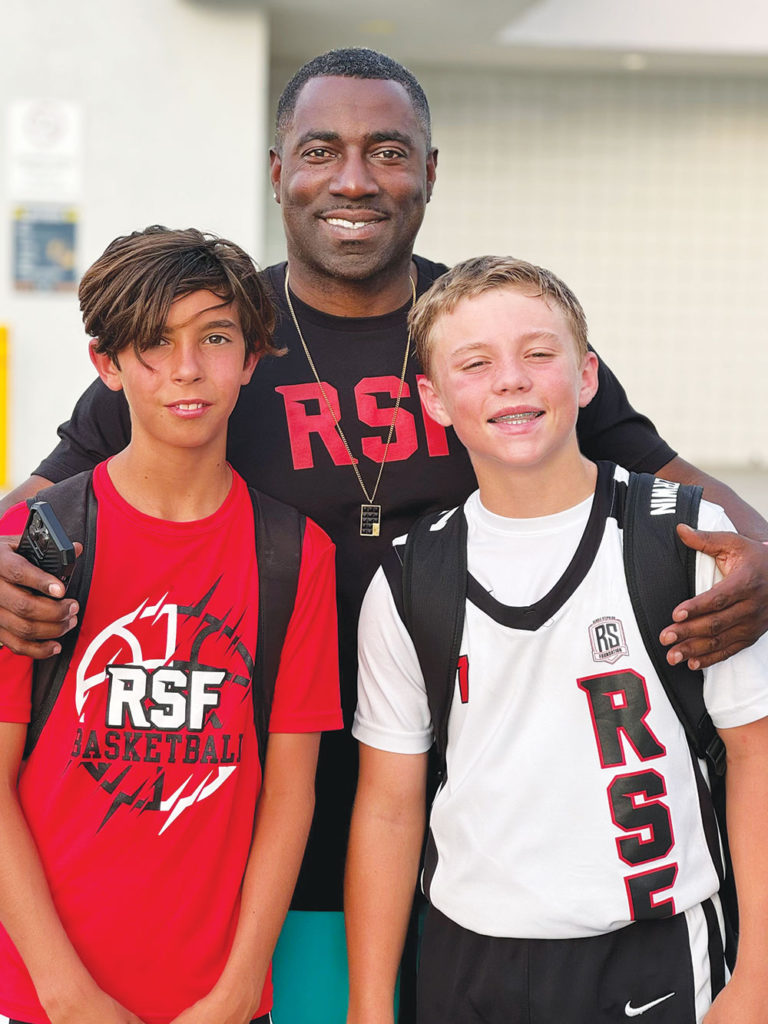
Reggie Stephens
When you look up Reggie Stephens’ page on Wikipedia, his title is listed simply as “cornerback.” For those of you who are culturally underprivileged, that’s a position in the American version of football. And a great cornerback he was. Good enough to play in the National Football League for the conference champions New York Giants in Super Bowl XXXV. In 2000 he had three interceptions and eight solo tackles on his way to winning an NFC championship ring. He was a star at Santa Cruz High and Cabrillo College before being named recipient of the Homer Hazel Trophy as MVP of the Rutgers University university football team and to the first team in the Big East conference. But it’s been off the field that Stephens has made his mark. If ever there’s been a role model for local youth, it’s Reggie Stephens. He’s coached, mentored and trained young men and women throughout the county, focusing on all aspects of life, not just athletics (his rap name, by the way is Famouz). Everywhere he goes he inspires. He’s also spearheaded the nonprofit Reggie Stephens Foundation, which supports various programs in flag football, basketball and softball. The foundation’s motto: SEEK BELIEVE ACHIEVE! (Geoffrey Dunn)
Kim Tschantz
Kim Tschantz co-founded Save Our Shores in 1977, the coastal watchdog group whose coastal crusade culminated in the 1992 Monterey Bay National Marine Sanctuary and a permanent ban on offshore drilling. Tschantz ran Santa Cruz County’s environmental review program before launching a 20-year consulting practice—and served 15 years on SOS’s board. Since 2022, he has served on the Watsonville Wetlands Watch board. (Dan Pulcrano)
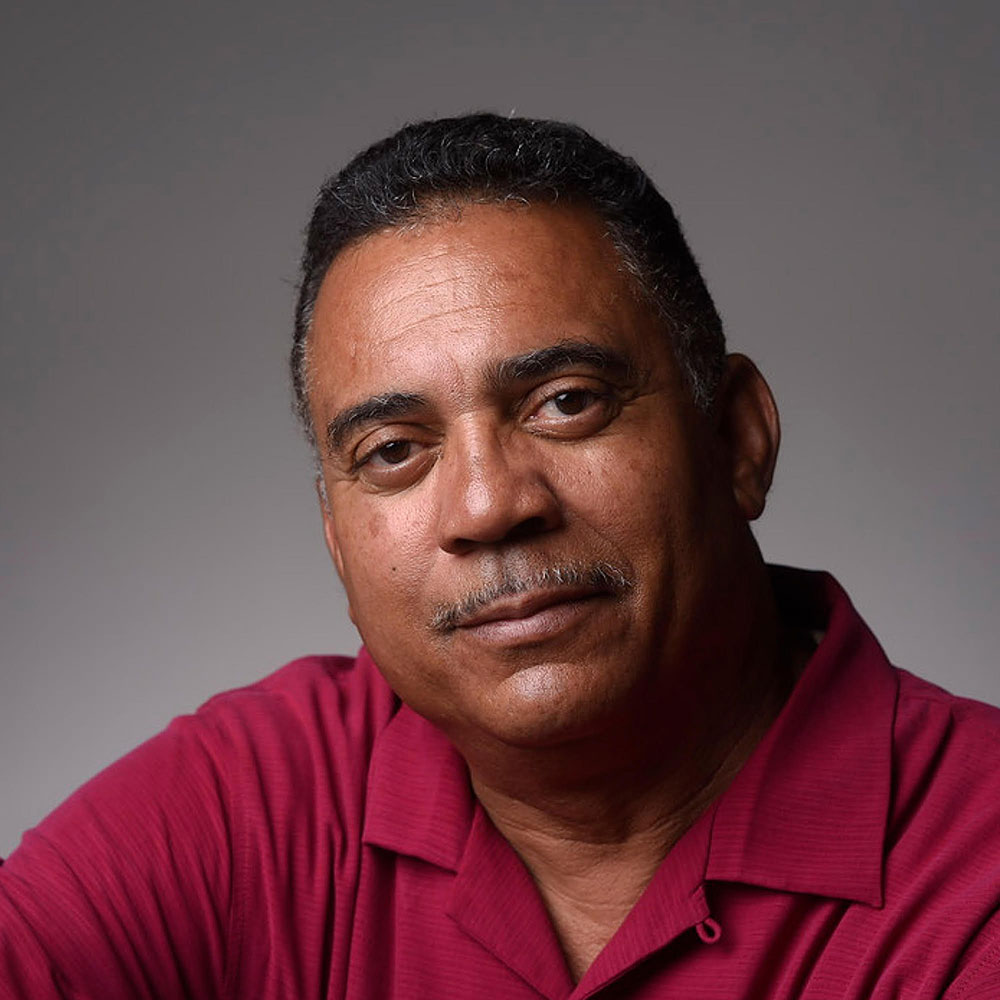
Donald Williams
Since founding UCSC’s African American Theater Arts Troupe (1991) and Rainbow Theater (1993), Donald Williams has spent nearly 35 years bringing multicultural theater arts to the university and beyond through the one-of-a-kind programs he leads in the fall and spring quarters. With a B.A. in theater from Michigan State and an M.F.A. in directing from the University of Southern California, Williams arrived in Santa Cruz in 1990 for a teaching job at UCSC and made it his home. “Santa Cruz has some of the best entertainment you can find, from Kuumbwa to Cabrillo to the 418 Project. It’s crazy—who’da thought you could see so much live stuff in such a small town?” Williams asks. Inspired by students of color, the accepting and free nature of the Santa Cruz arts scene, and by his own college experience at Michigan State—where productions exploring African American history and culture by students of color were largely absent—his theatrical groups have come a long way, evolving from zero-budget shows in borrowed spaces into mainstage productions.
“I strive to bring authentic work to the public as a whole, with historical, spiritual and intellectual flair. I facilitate art that teaches people, because that’s what art is all about,” Williams says. (Mathew Chipman)
Ron Zaidman and Joanna Zhao
Nearly 40 years ago, Ron Zaidman and Joanna Zhao planted a seed in Santa Cruz that would grow into one of the most respected schools of traditional Chinese medicine in the country: Five Branches University. At a time when acupuncture and herbal medicine were still considered “alternative,” they opened the doors to an entirely new way of thinking about health and healing. Since then, Five Branches has trained generations of practitioners, opened affordable community clinics, and even launched the nation’s first hospital-based traditional Chinese medicine residency. Thanks to Zaidman and Zhao’s vision, Santa Cruz has become a hub for integrative wellness that continues to ripple out across the globe. (Elizabeth Borelli)





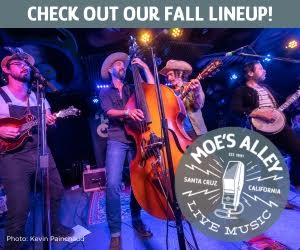








I’m surprised you didn’t mention Sam Karp and Al DiLudovico, who led Food and Nutrition Services (now Community Bridges), spawning Mobile Meals, Salid Para La Gente, Santa Cruz Community Credit Union, Lift Line, Seconf Harvest Food Bank of Santa Cruz Coubty, and many other local human services programs in Santa Cruz County. Or Willy Elliott McCrea, who led the Food Bank for 40 years, transforming it into one of the healthiest food banks in the country.
It’s a touch assignment to select just 50, but your choices should have included the history dude, Sandy Lydon. His history classes at Cabrillo informed thousands of Santa Cruzans about this county’s fascinating history. And, of course, he authored several books including Chinese Gold.
Wouldn’t Jesse Nichols be the local, not Barry Swenson, who gets credit? Sure, he worked for Swenson, but he lived here and led redevelopment – also volunteered and really cares for all that makes Santa Cruz.
I agree that Sandy Lydon should be on that list. I would also include Paul Lee (without whom there would be no Alan Chadwic and Homeless Garden.)
Re: Robert Sinsheimer…
I am aghast that there is no mention of Santa Cruz’s own Dr. David Haussler in this accounting of the creation and the significant achievement of the Human Genome Project at UCSC. Dr. Haussler is well known world-wide as the spearhead for the Human Genome Project at UCSC. He worked with the NIH’s Francis Collins directly on the science and the management of the program and he personally recruited Jim Kent to work on this formative and historically significant project. Dr. Haussler is also responsible for huge amounts of funding being brought into USCS (and as result, Santa Cruz) well past the initial Human Genome Project – advancing Genome research around the world. The Good Time’s accounting here of how Dr. Haussler and Jim Kent contributed to the Decoding of the first Human Genome is criminally simplistic, inaccurate and shows absolutely no understanding of these events. I’m disappointed. Do your research.
Joe Ferrero and Atlantis Fantasyworld? Joe even made it onto The Simpsons. Anchor business in Santa Cruz since the 70s, through the earthquake and all.
Id throw in a vote for Michael Horne. From his record shop Blue Rhythm in Capitola, his incredible documentary on the Kings of Calypso music, his mainstay nightclub Palookaville which powered Santa Cruz nightlife for over a decade, the Mt. Sol festival at Roaring Camp railroads which kept music loving families outside in Felton dancing the day away and his ever present Pulse Productions (and before that Back Beat) doing a wide variety of shows from Willie Nelson at the fairgrounds to James Brown at the Coconut Grove and just recently a stellar Little Feat show at the Rio he has worked seamlessly with community members of every ilk in the 5000+ shows he’s put together over the years not to mention his band Special Fun where he has showcased his percussion and steel drum skills for over 30 years….
I have worked for him in many capacities at palookaville through today where we’ve been working on projects on his property and his fingerprint is on a lot of great Santa Cruz memories and he’s a champion of the Greater Santa Cruz area all the while.
that’s my pitch loved the list though amazing folks on there some whom I’ve crossed paths with, Thanks!
No mention of Richard Novak founder of Santa Cruz Skateboards has done more than make Santa Cruz an international name? He would be my pick. I agree that Sandy Lydon should be on that list too. Barry Swenson a San Jose Developer?
Thank you for a thorough and inspiring list of folks who have shaped our great community. Inevitably, such lists also highlight omissions. I would add two others: Yacht Designer Bill Lee, whose revolutionary ultralight displacement racing sailboat designs (including the legendary Merlin, which shattered the previous TransPac race record and held the new record for twenty years) put Santa Cruz and Monterey Bay on the international sailboat racing map.
Also missing is historian, author, professor, and activist Page Smith, founding provost of UCSC’s Cowell College and, following his 1973 resignation from UCSC, Penny U, a lecture and discussion series hosted by Bookshop Santa Cruz (admission was one penny) that revived London’s 17th Century Coffee House tradition here in Santa Cruz. Smith, along with colleague and friend Paul Lee, also founded the William James Association, which help found a homeless shelter and the ongoing Homeless Garden Project. Smith and Lee were also key influences on Jerry Brown’s creation of the California Conservation Corps (“Hard Work, Low Pay, Miserable Conditions, and More!”).
I feel like this list should get expanded to 100 as we have so many amazing individuals who have contributed to the rich culture and history of our town. As can be seen in the other comments, there are multiple others that could easily be in this list of honorees.
Richard Novak, for example, from NHS and Santa Cruz Skateboards, along with Jim Phillips (in the list) is easily someone who helped put the name Santa Cruz on the map worldwide.
I am glad that several people mentioned Sandy lydon as he was a powerhouse in history. I am very familiar with the Duke’s visit to Santa Cruz as my father spent the afternoon with him introducing our beach to him and his buddies. The beach went on to be named 4 mile beach in his book on the surfing beaches of the world. You have mentioned many names that I never heard of and a lot that were not mentioned who could have been. Henry Cowel, the Wagner’s, the Stagnaros, just to name a few. I can think of so many i knew once upon a time.
Great article, but I agree that Al DiLudovico and Sam Karp belong on the list, not only for their roles in creating a local Meals on Wheels program, but also for supporting Watsonville cannery workers in their battle for fair wages and working conditions vs. Green Giant – and with considerable opposition from local law enforcement.
Also, Henry Mello’s political legacy is as a champion for seniors, including authoring the Older Californians Act, and being the political ally that led a legislative solution when Los Angeles County filed a lawsuit attempting to steal funding from Meals on Wheels in Santa Cruz & San Benito Counties to line the L.A. coffers. Terry Hancock was the unsung hero of that battle, but that’s another story…
Great seeing so many of my local heroes on this list. Please proofread: 1) two photos have the same caption 2) you wrote Mark Rotkin instead of Mike (not in his writeup, in the Donna Haraway one. 3) incomplete sentence in the Jeanne Houston writeup. And also in that one you said Jim studied “dramatic” and Jeanne studied… what?
You left out Paul Lee
A great list, hard to keep it to 50. I would add Eloise Pickard Smith to the recommendation of her husband Page since she was instrumental in the creation of the Museum of Art and History and the Cultural Council (now Arts Council). Wallace Baine deserves to be on the list as a decades-long cheerleader and writer about the arts in Santa Cruz. Visual artists are not well represented and there are many, but one to mention is sculptor and teacher Coleen Kiebert, who has made a deep impression upon her students and the community for 50 years or more herself! Ann Ostermann’s steering Open Studios (our most visible and successful visual arts endeavor) for the last 20 years is also noteworthy. Terry Brickley, a disability rights activist from the 1970s through the 90s, was a prime mover for Santa Cruz’s becoming one of the most accessible communities in the country. Local historians Ross Eric Gibson and Carolyn Swift should be added to the list of Geoffrey Dunn and Sandy Lydon (noted here several times).
Someone mentioned Joe Ferraro, and I would like to add James Aschbacher’s name to that recommendation. Jim was Joe’s partner in Atlantis Fantasyworld before striking out as a visual artist and then becoming a well-known and well-loved mixed media painter. His wife, Lisa Jensen, author of several novels, wrote film reviews for the Good Times from the 70s till the pandemic. Together they painted a lot of murals in Jim’s whimsical painting style around Santa Cruz and elementary schools (with the help of the students). Jim was also active in arts organizations, including the Cultural Council (now Arts Council) and the Pajaro Valley Art Gallery. Sadly, we lost him 7 years ago this week.
Thank you for the GT50 Trailblazers article with immense thanks to all of them! The comments with added luminaries are as inspiring, all beings who shape a better world, highlighting our special place on this precious planet. And there are others: certainly Gary Griggs, Bruce Rosenblum, Fred Kuttner, Phillippe Kahn, Joel Primack and Nancy Ellen Abrams. Cheers to a Santa Cruz GT100!
This is a great list, but there have been so many influential people from this little town of Santa Cruz, that this list could have easily been 100 or more. Just a few of the missed names:
Richard Hoover and Rick Turner who spawned the thriving luthier scene in Santa Cruz
Annie Morhauser, who started Annie Glass
Courtney Graham and Keith Larkin who created the first lightweight aviation headset and founded Plantronics
Joe Ben Bivert, the force behind the Gorilla Pod and now Joby Aviation
Rob Roskopp, Mike Marquez and Rich Novak, who turned Santa Cruz Bikes into a global brand
Westside resident Reed Hastings, who with Marc Randolph, created Netflix and ultimately pioneered the streaming services we see today
David Kinch, the chef behind Michelin-starred Manresa, Manresa Bread, and Mentone
For the most part, I think it’s a great list, and indeed a difficult choice to include just 50, but Barry Swenson? And yes…NHS/Santa Cruz Skateboards Richard Novak missing? I would have put him up towards the top of the list. A world changing, all inclusive sport which has gone from a street sport, activity often frowned on by so many, to what is now an Olympic sport. Definitely a missing name!
I really enjoyed this article. Another hugely influential person would definitely be Tim Jackson, co-founder and long-time director of the internationally renowned Kuumbwa Jazz Center!
This is the best story you have printed in the 30-some years I’ve lived here. I knew about some of these people, was actually involved in the tussle over the UCSC mascot, but it was a great gift to learn about the people I wasn’t familiar with, and to learn more about the ones I knew.
Of course, you’re going to hear from people naming more people you should have included, and I hope you’ll print a sequel, listing even more of the folks who shaped our community. I have a candidate as well: Linda Birman-Hall, who founded the Santa Cruz Baroque Festival, and for close-on fifty years brought wonderful music to Santa Cruz.
Wonderful list and great work. You could have easily gone up to 100.